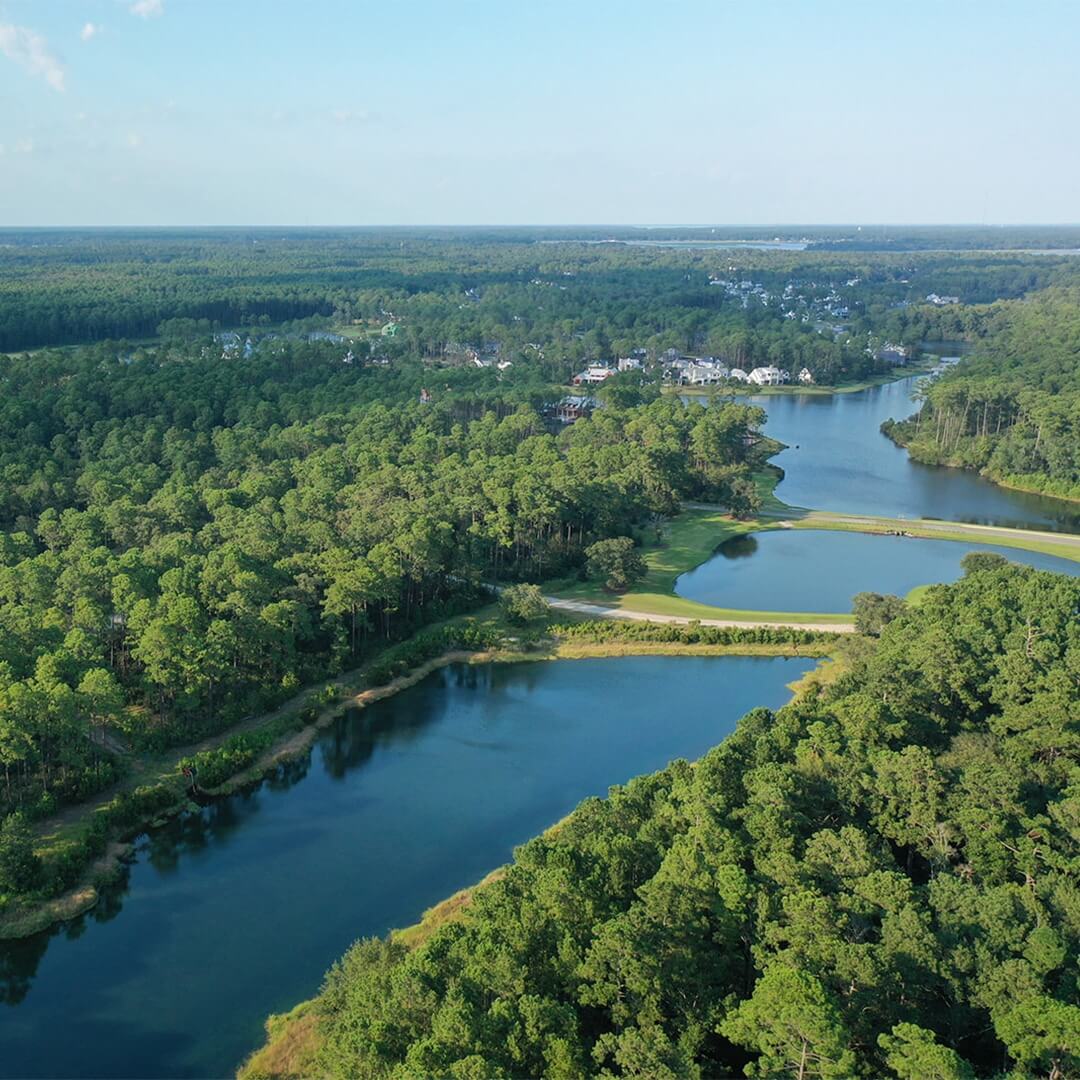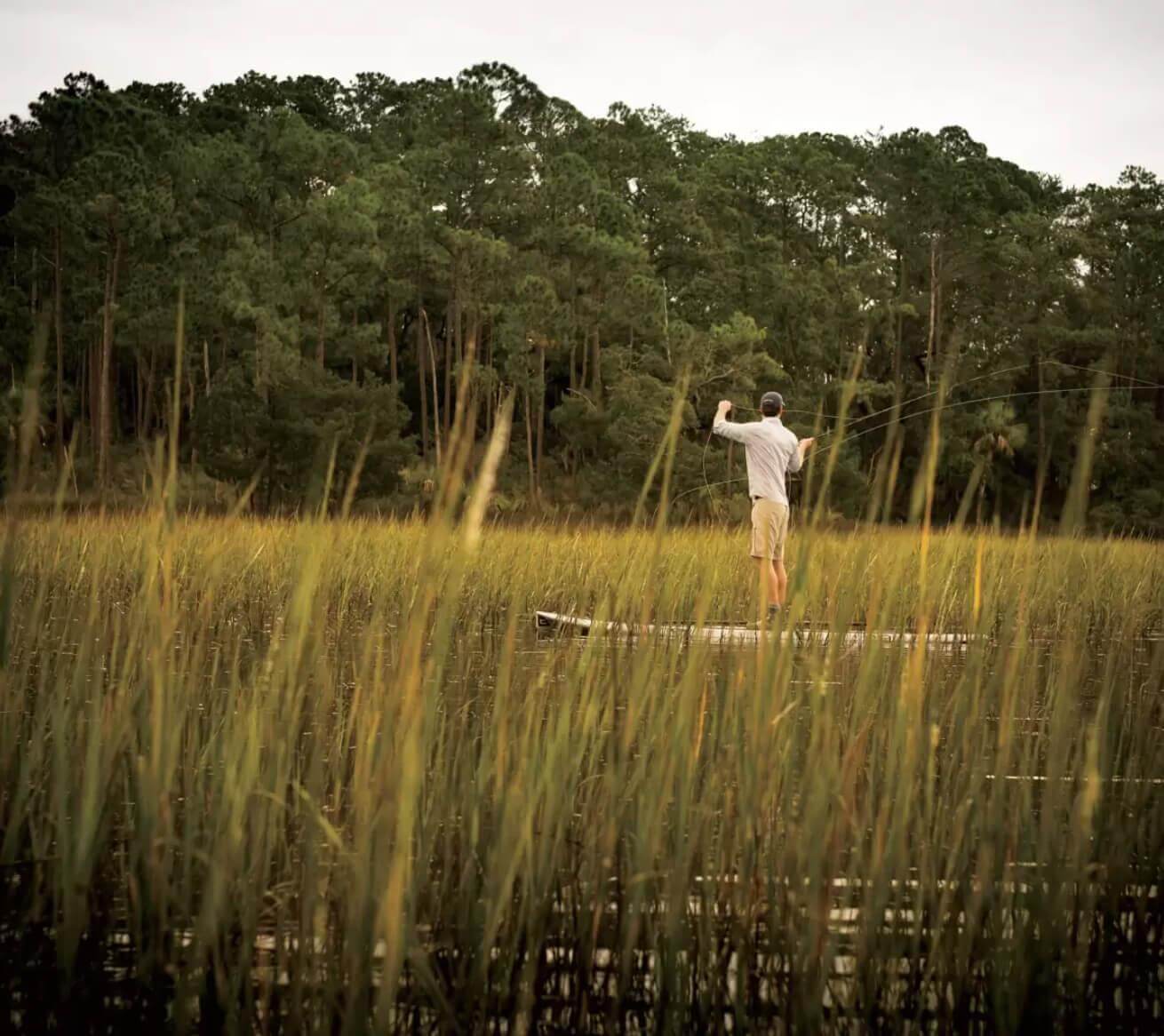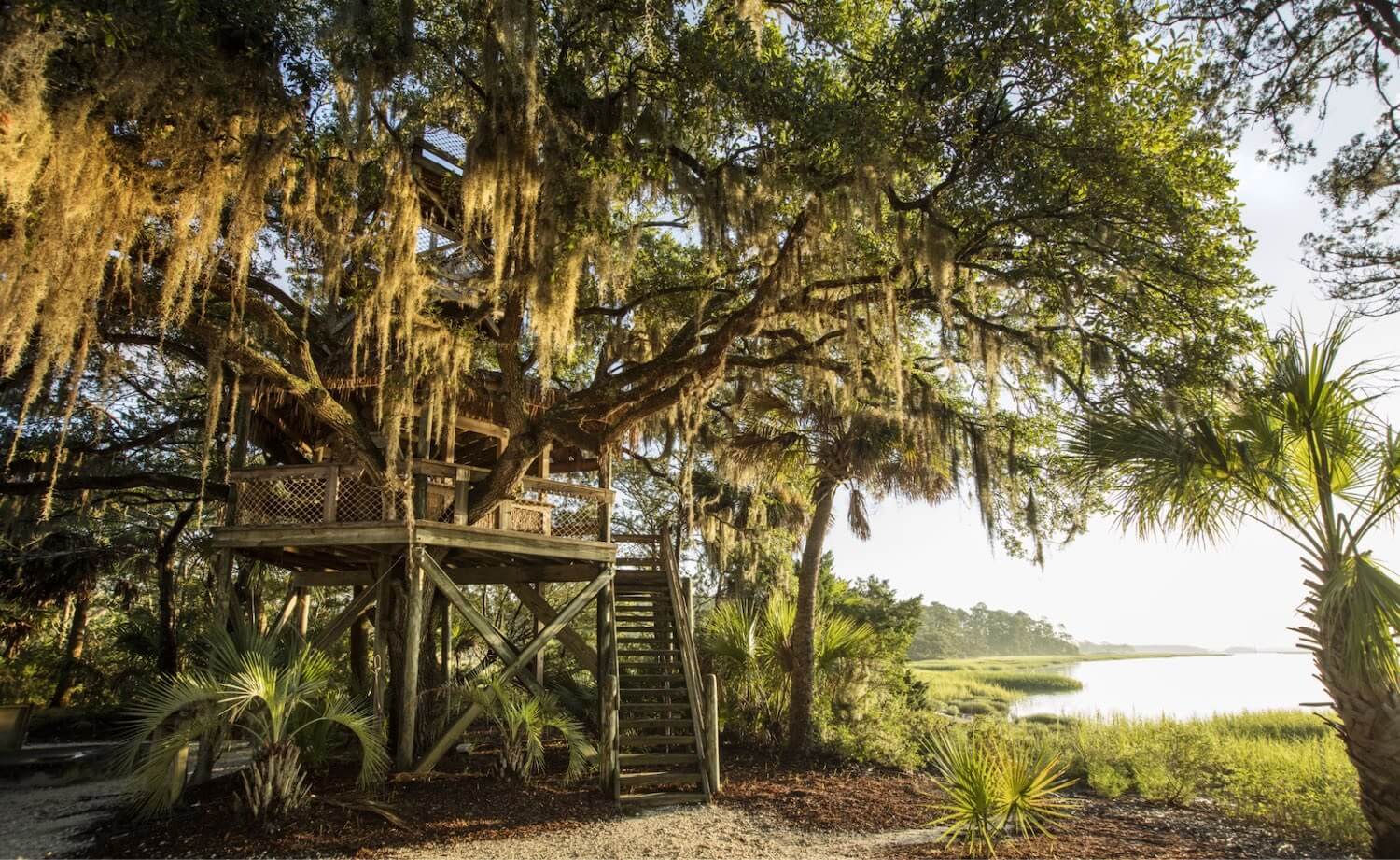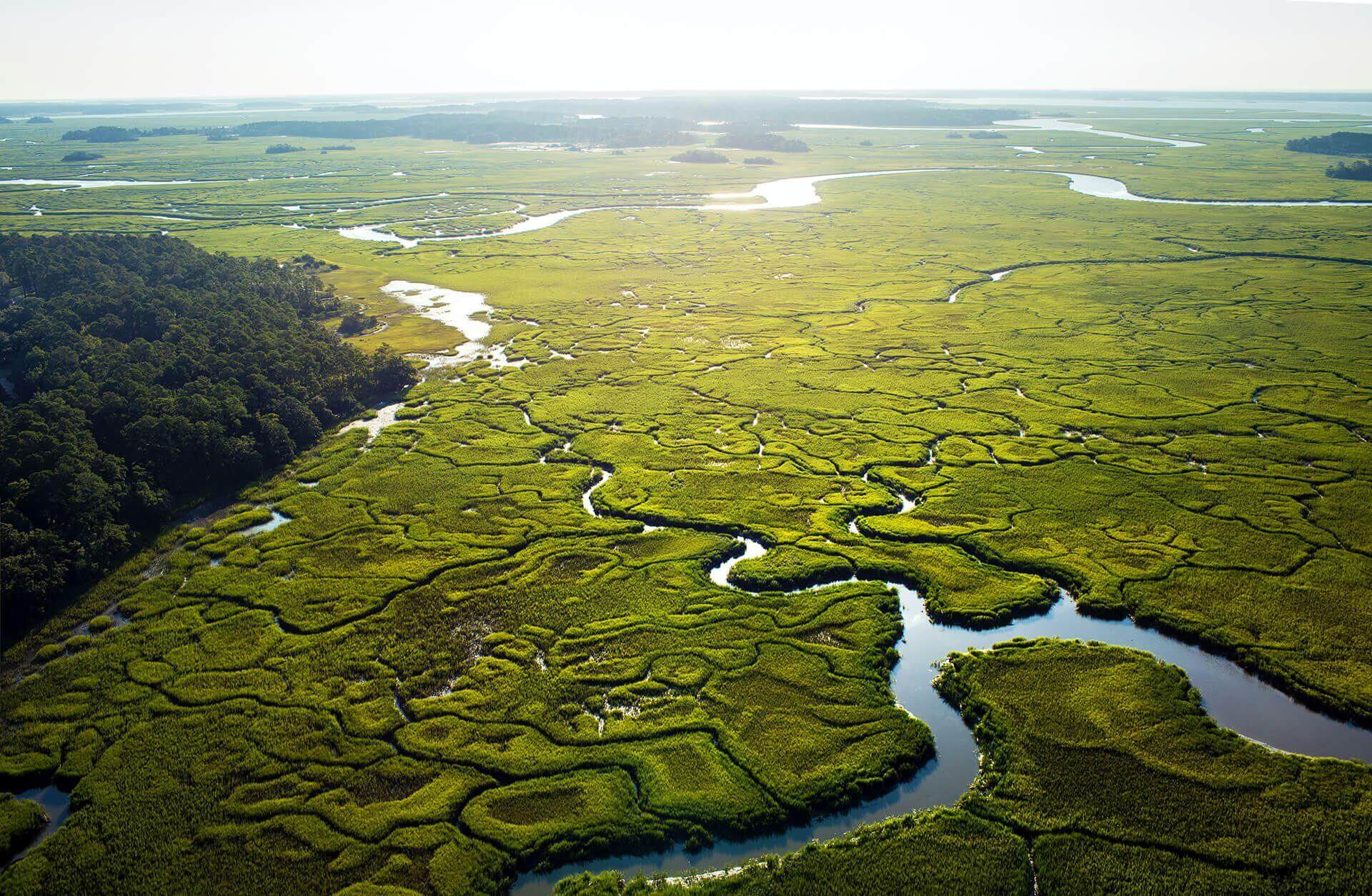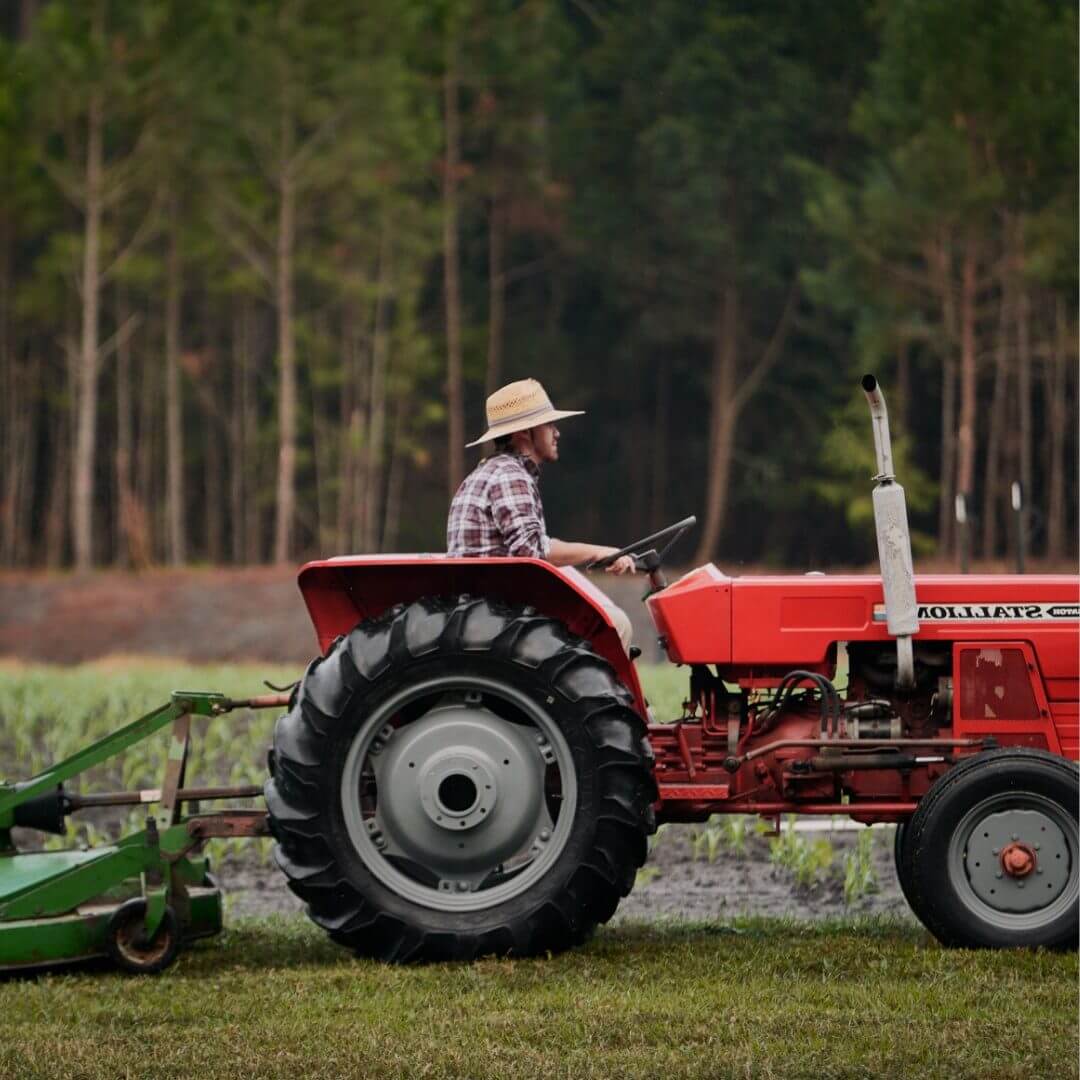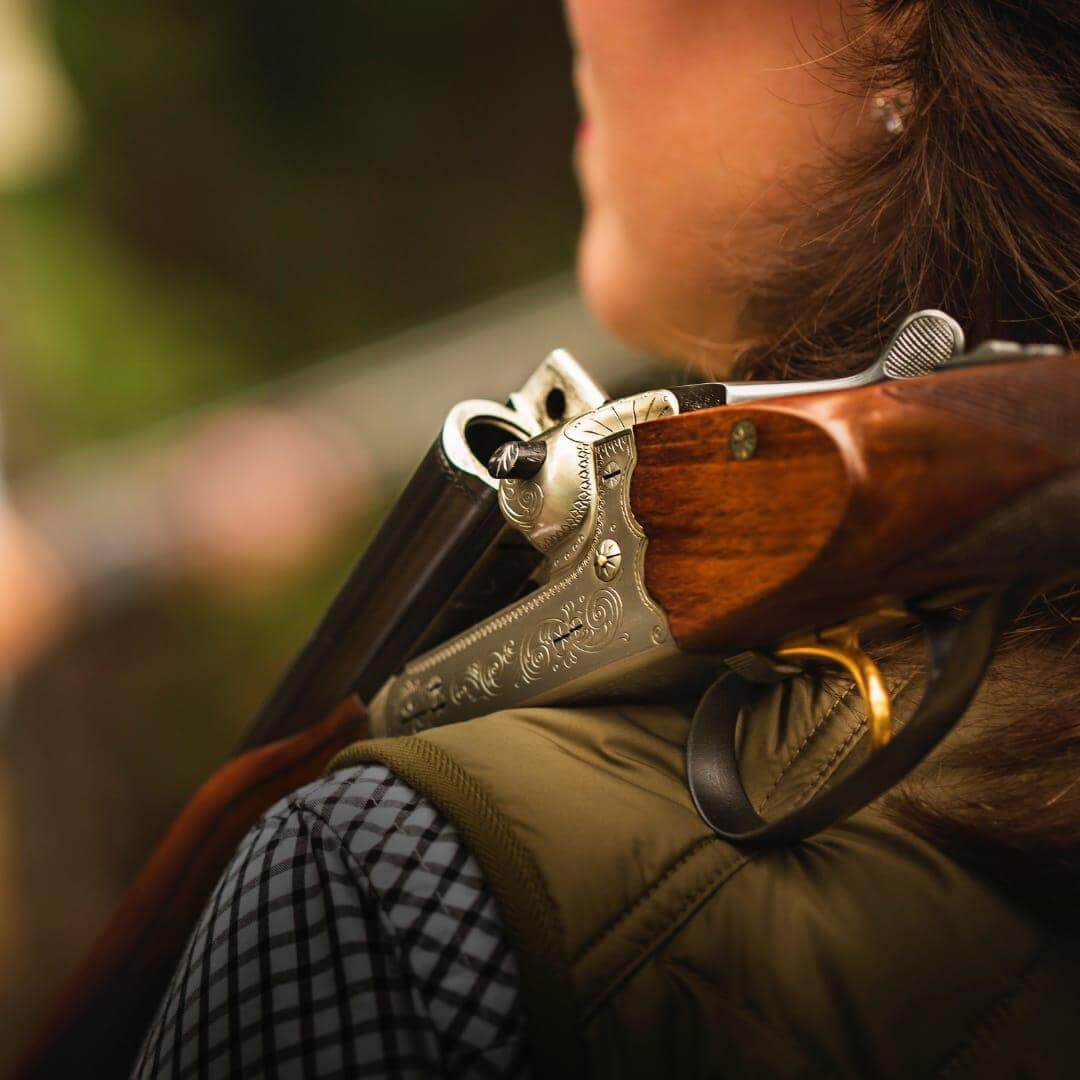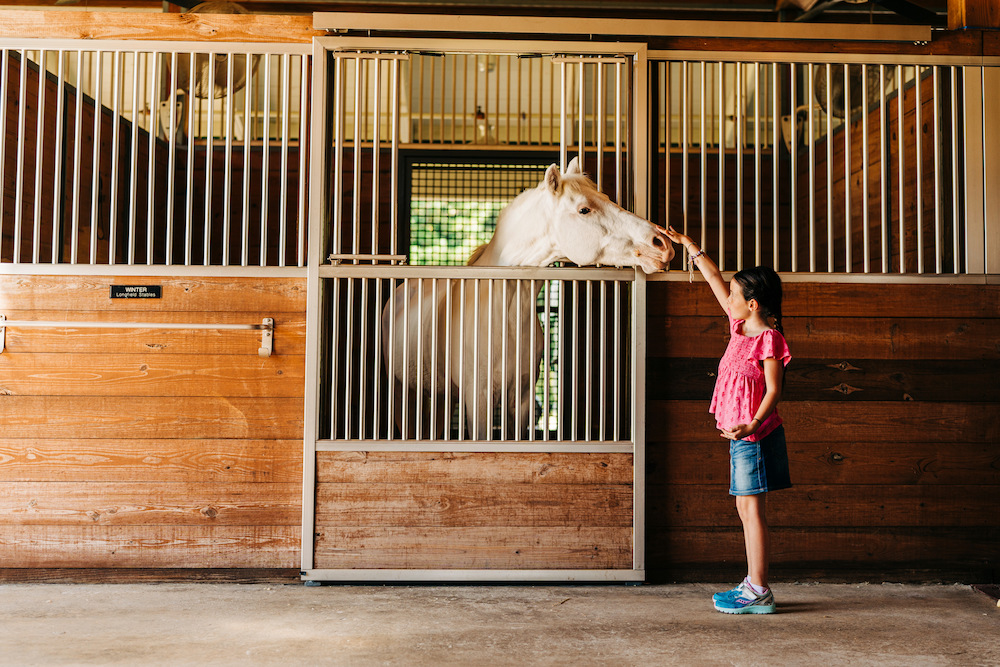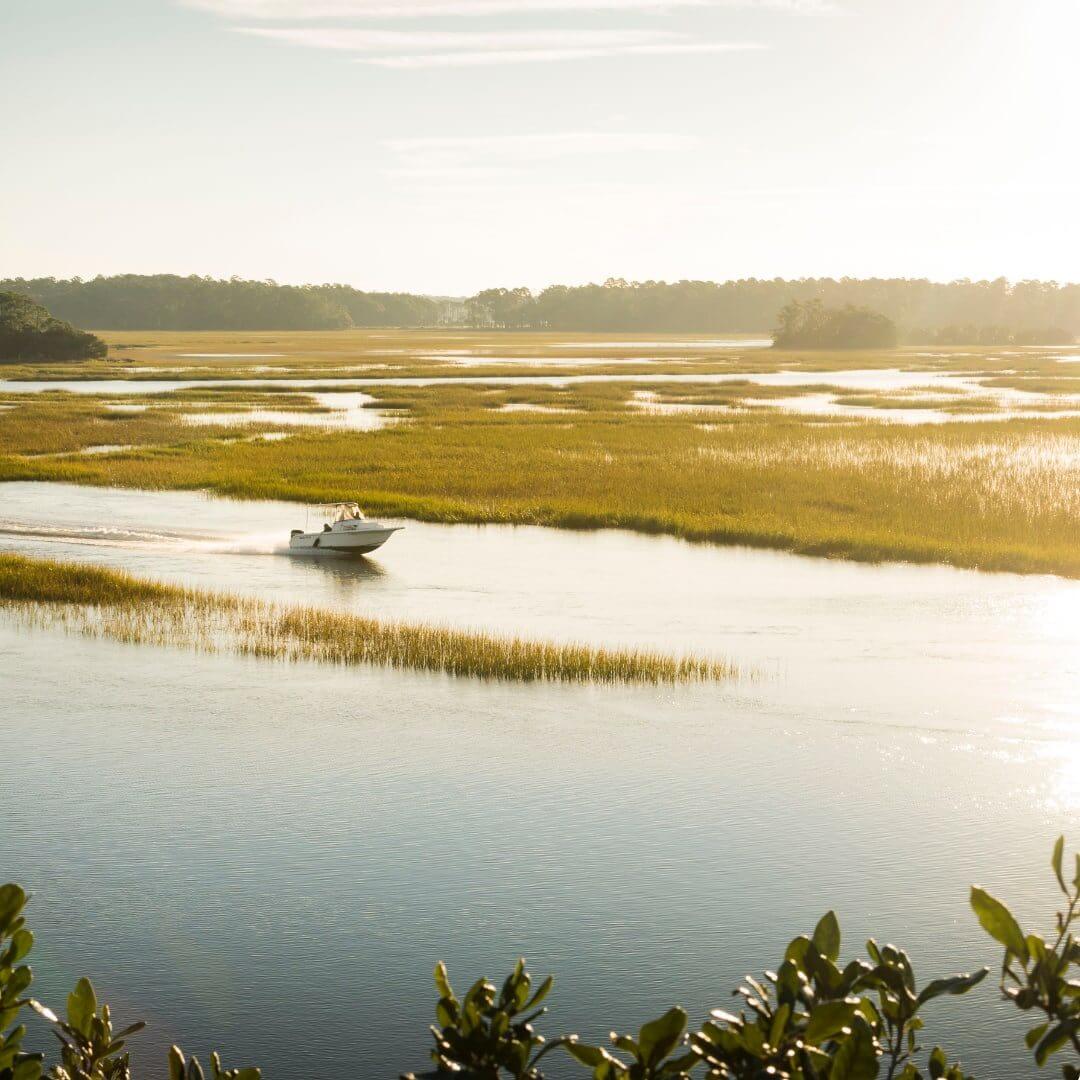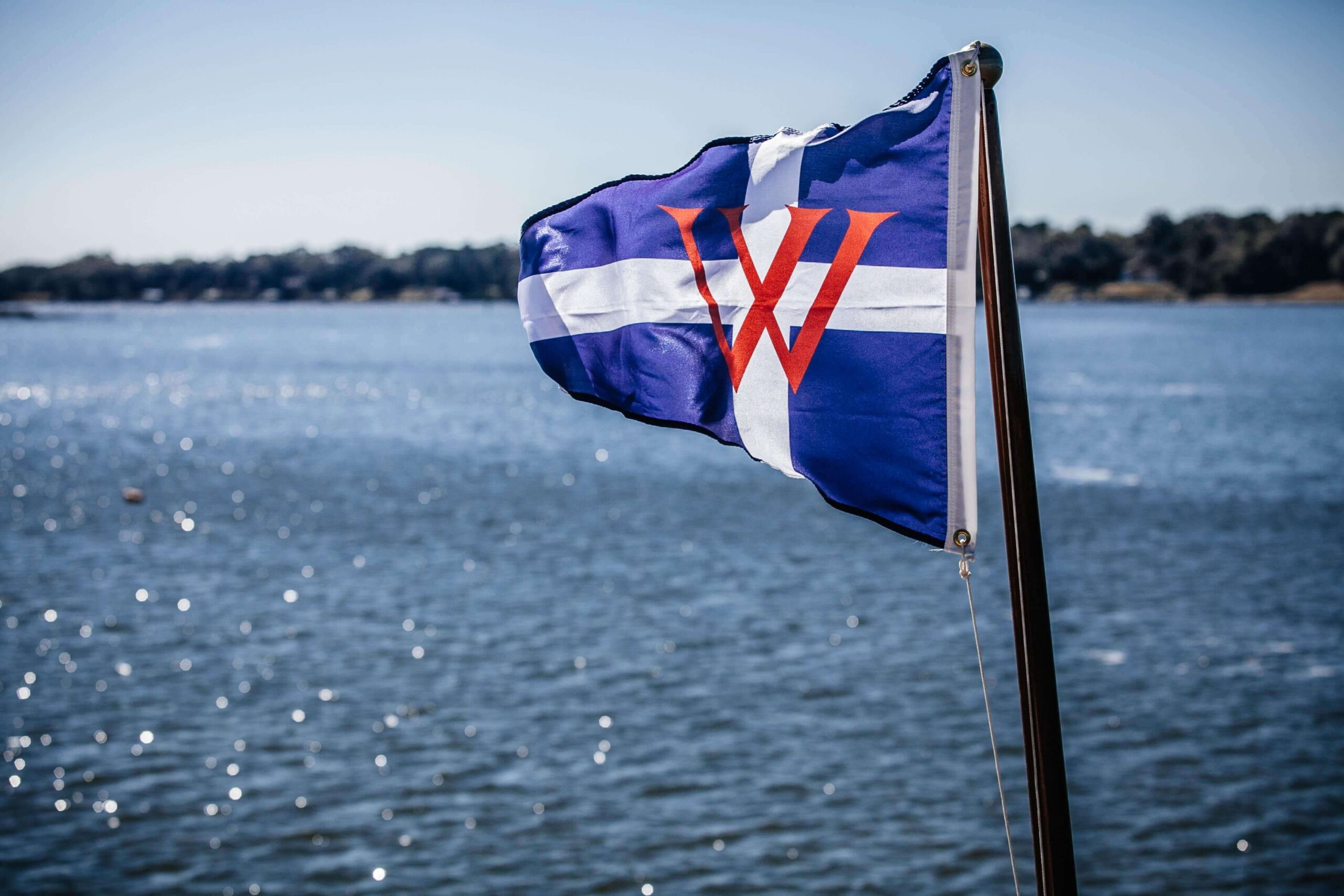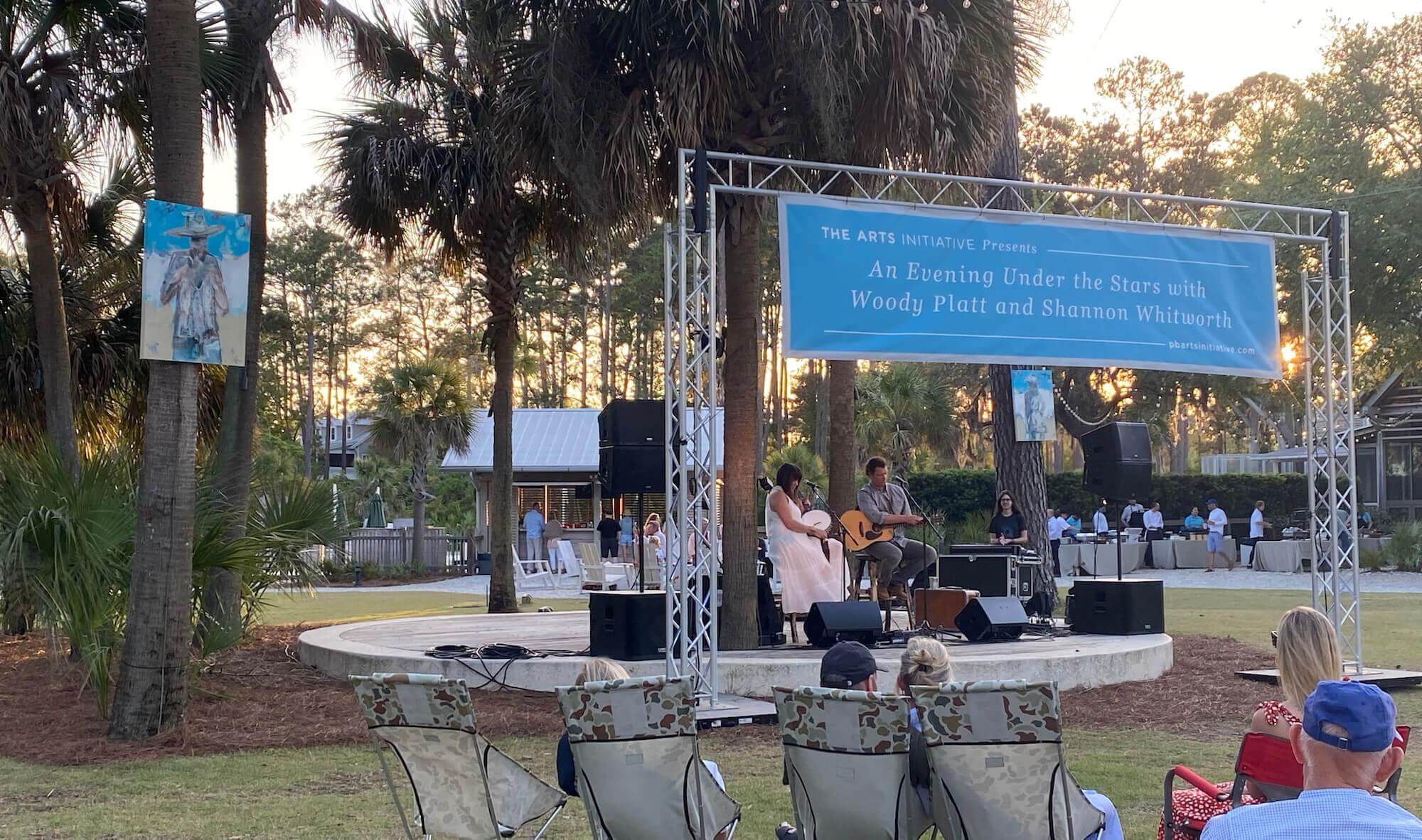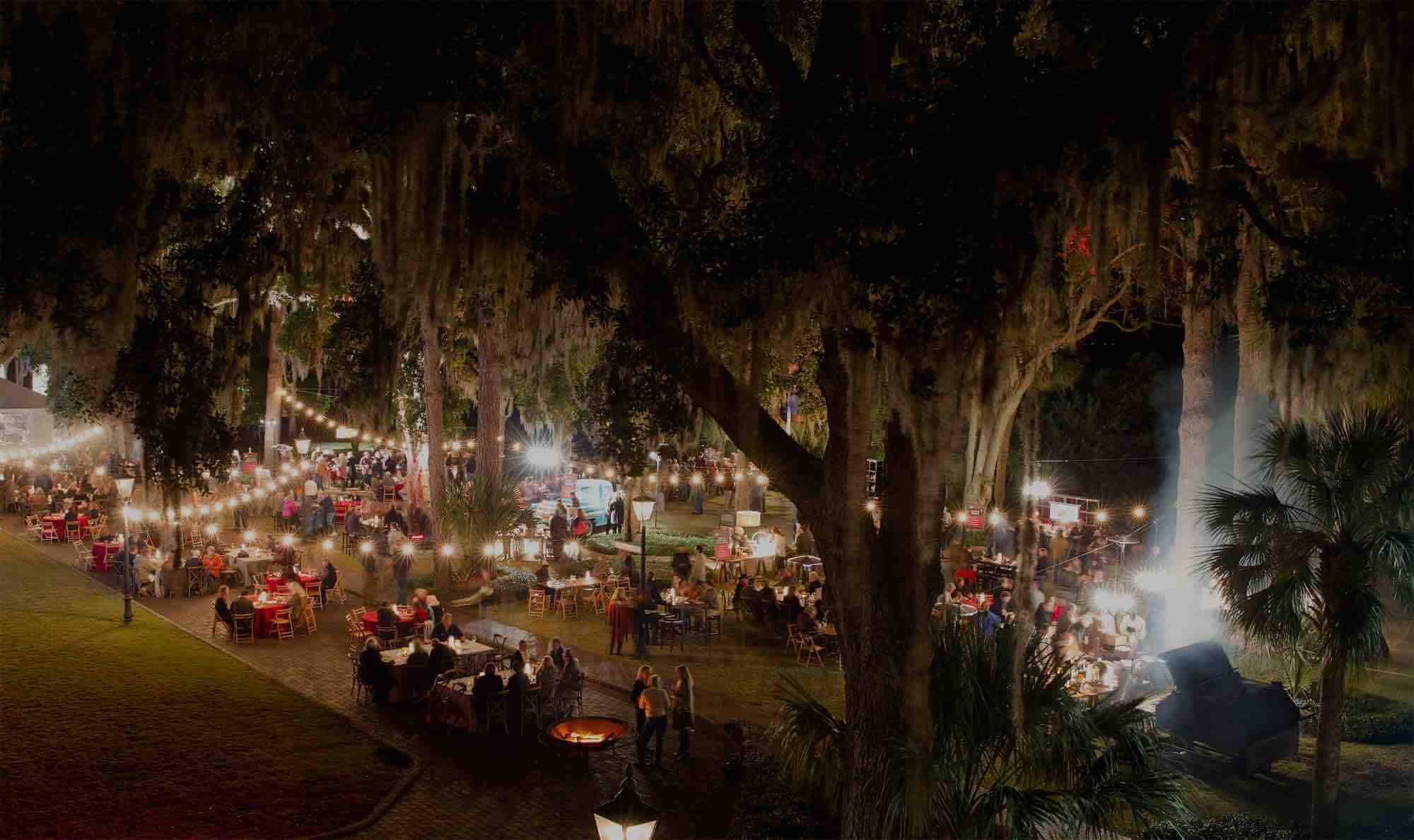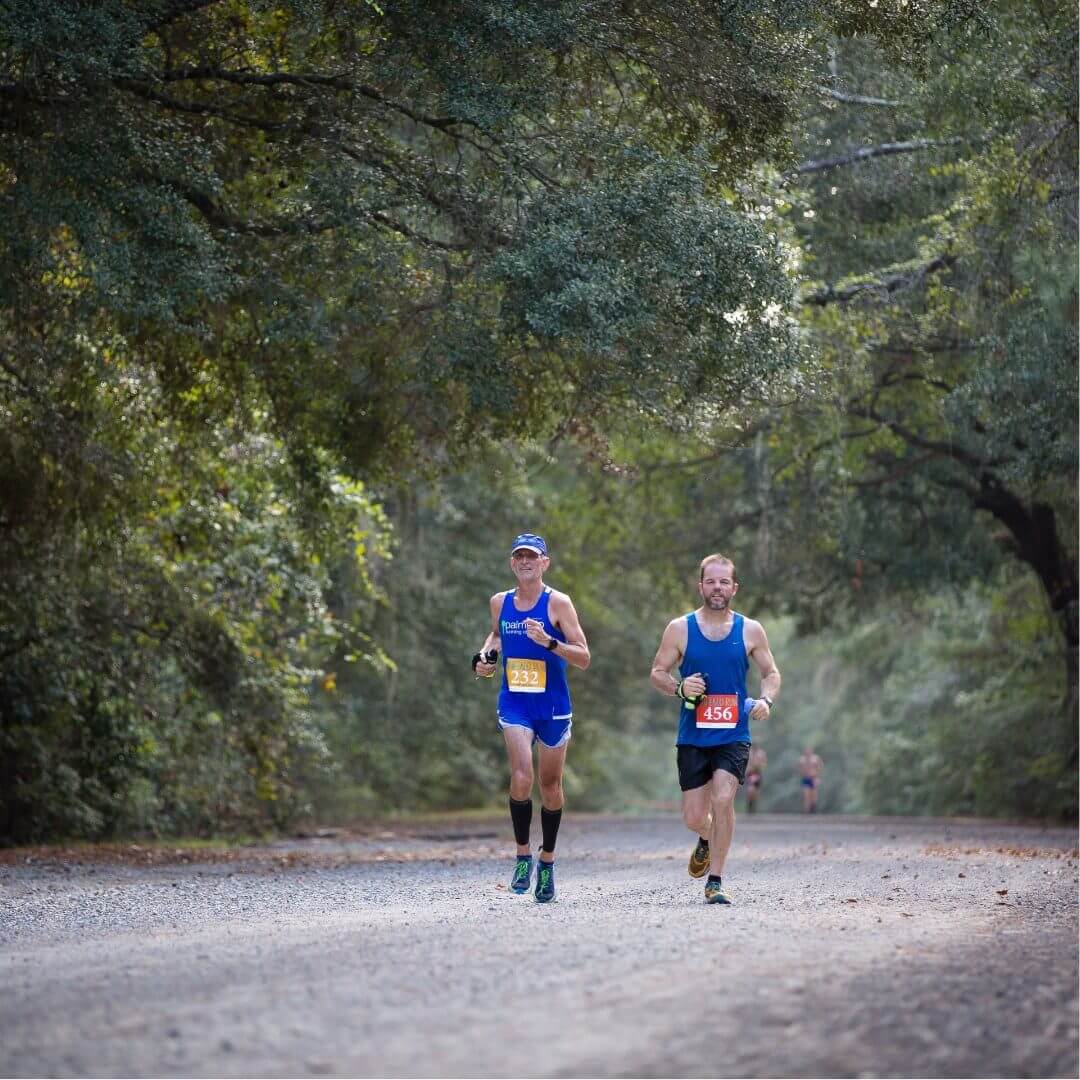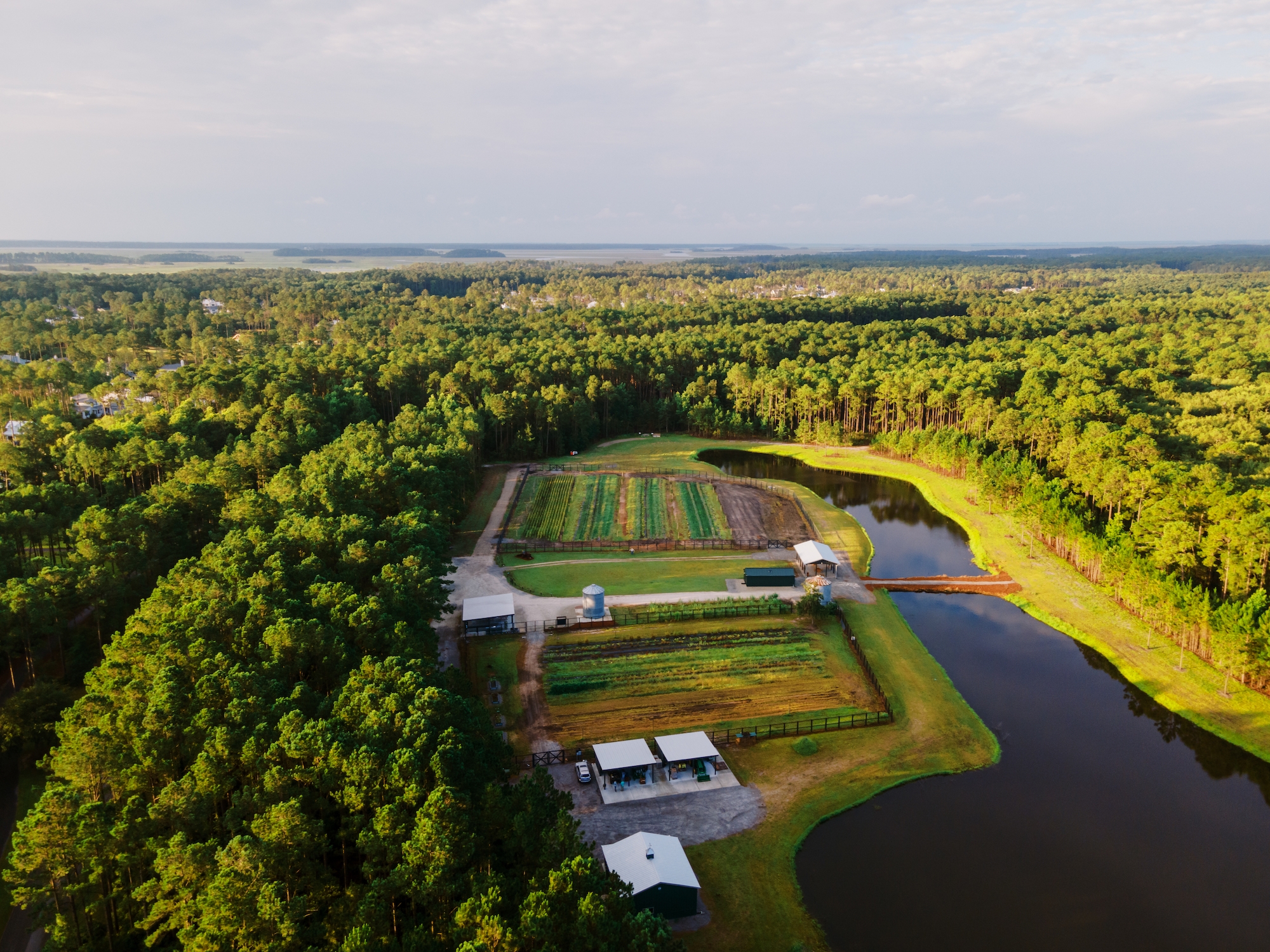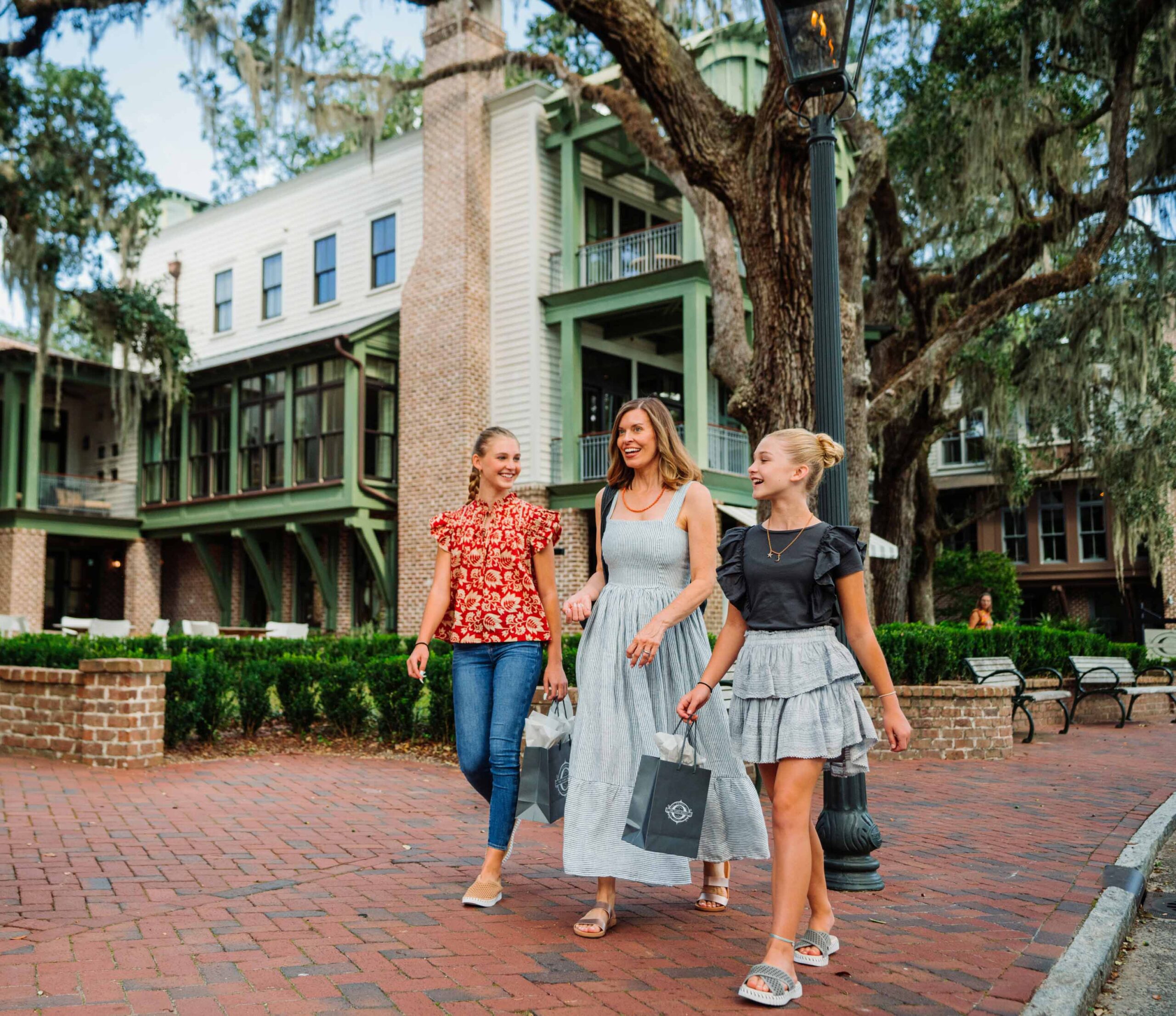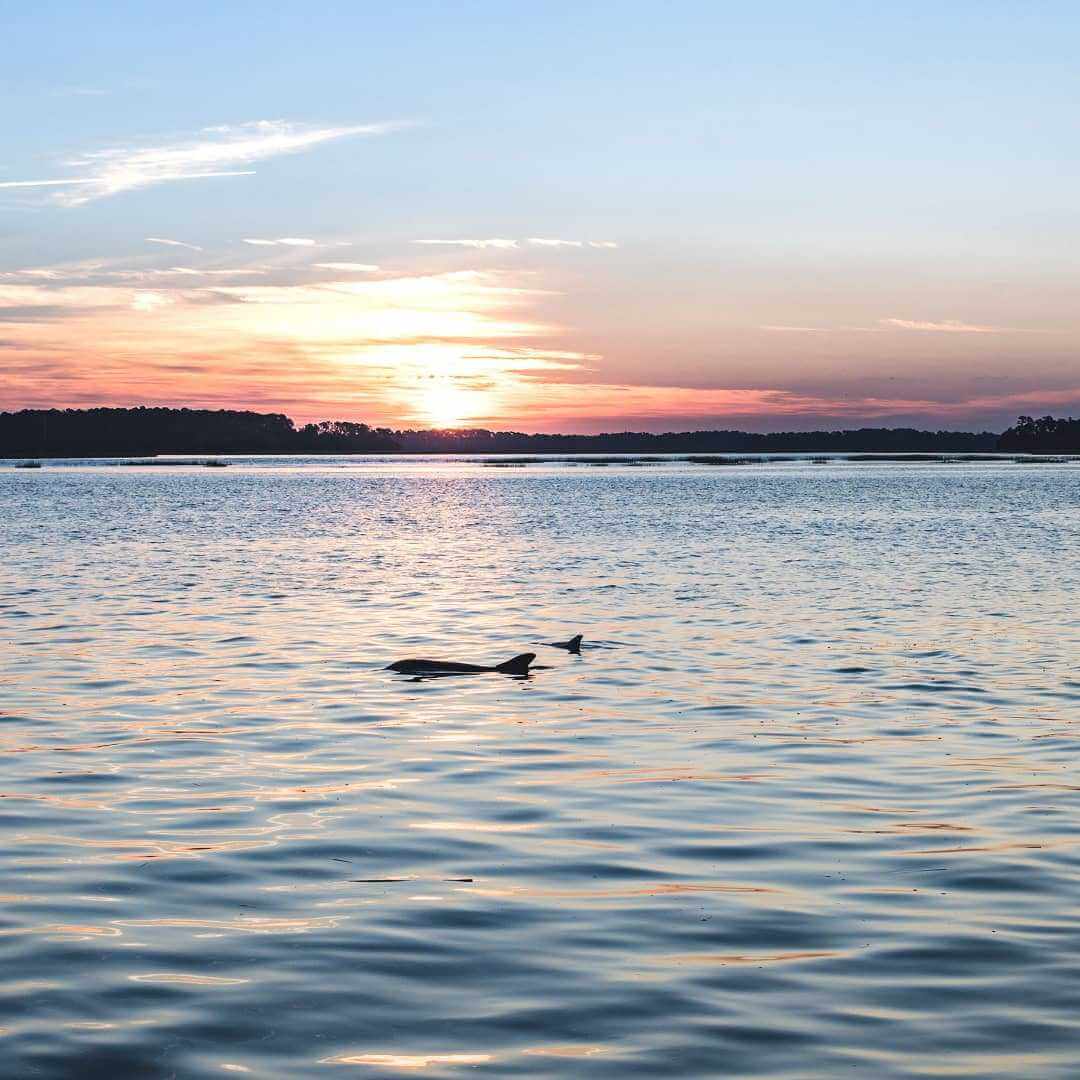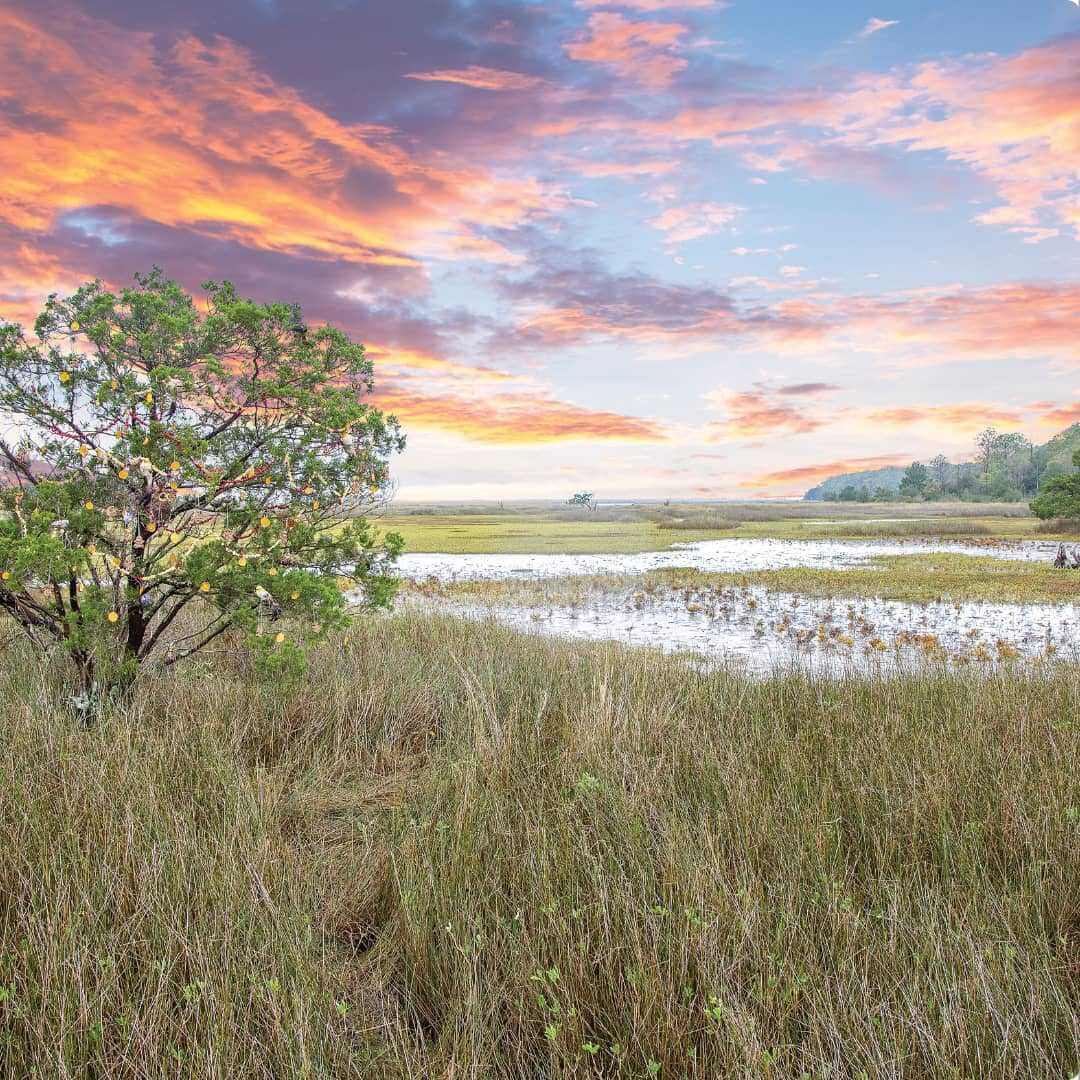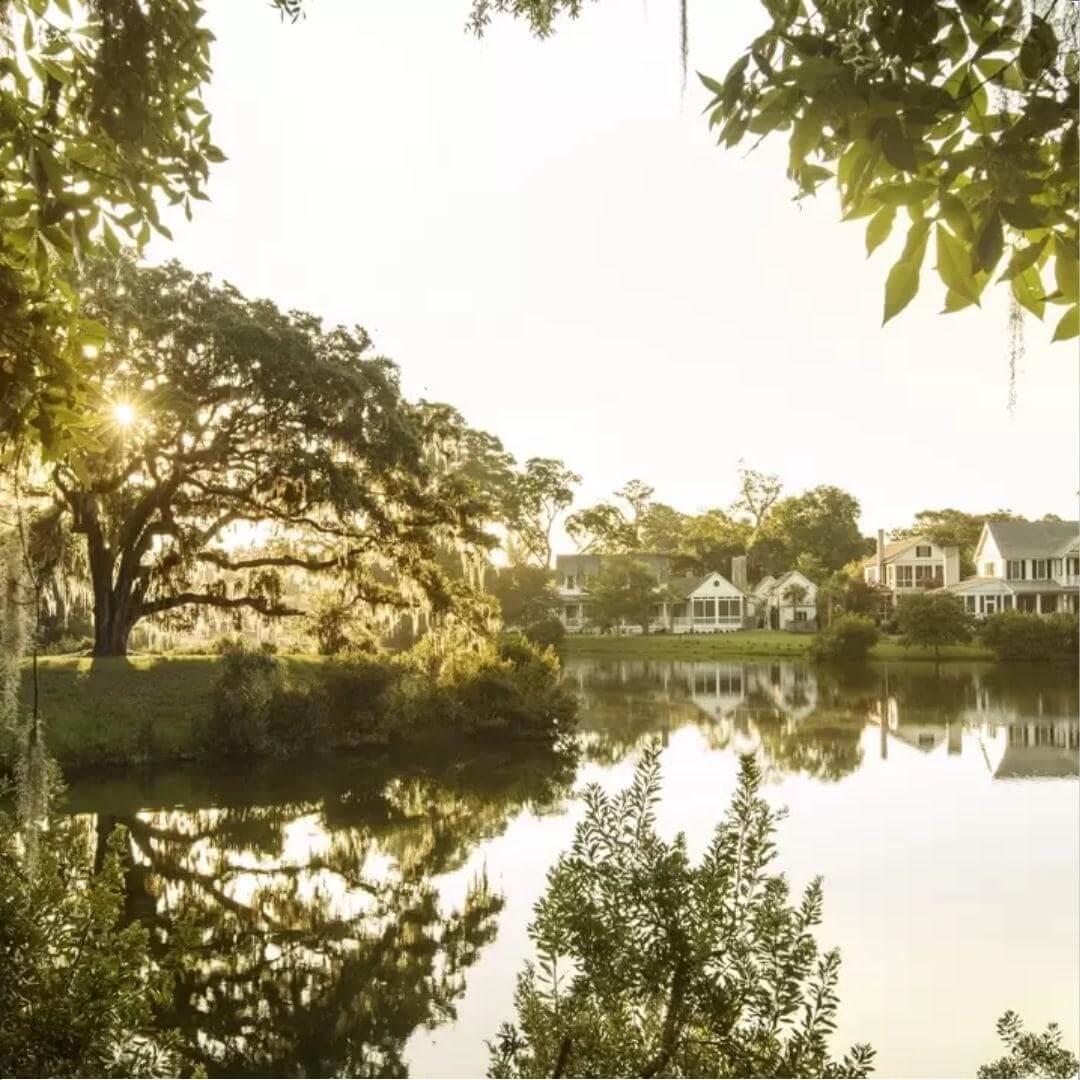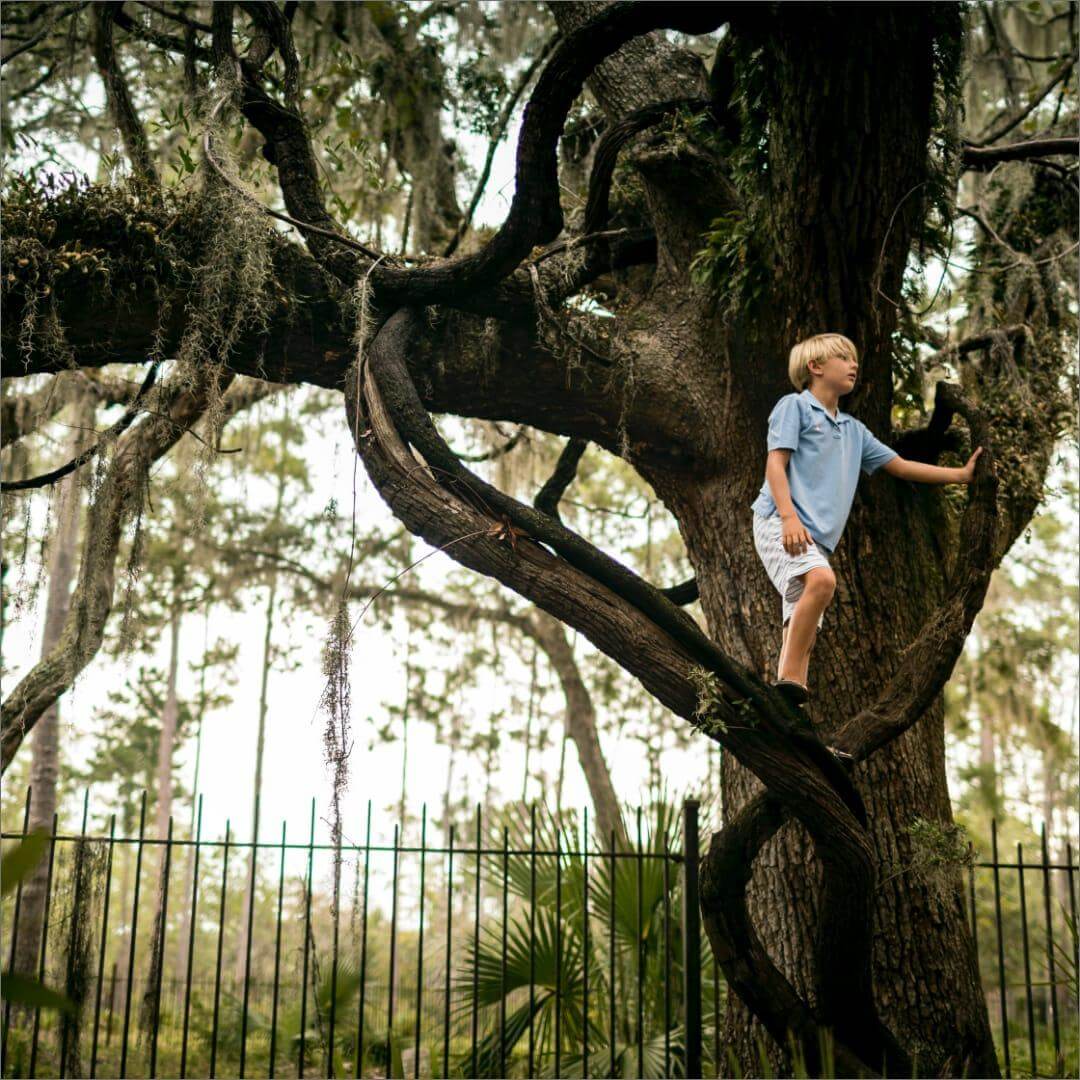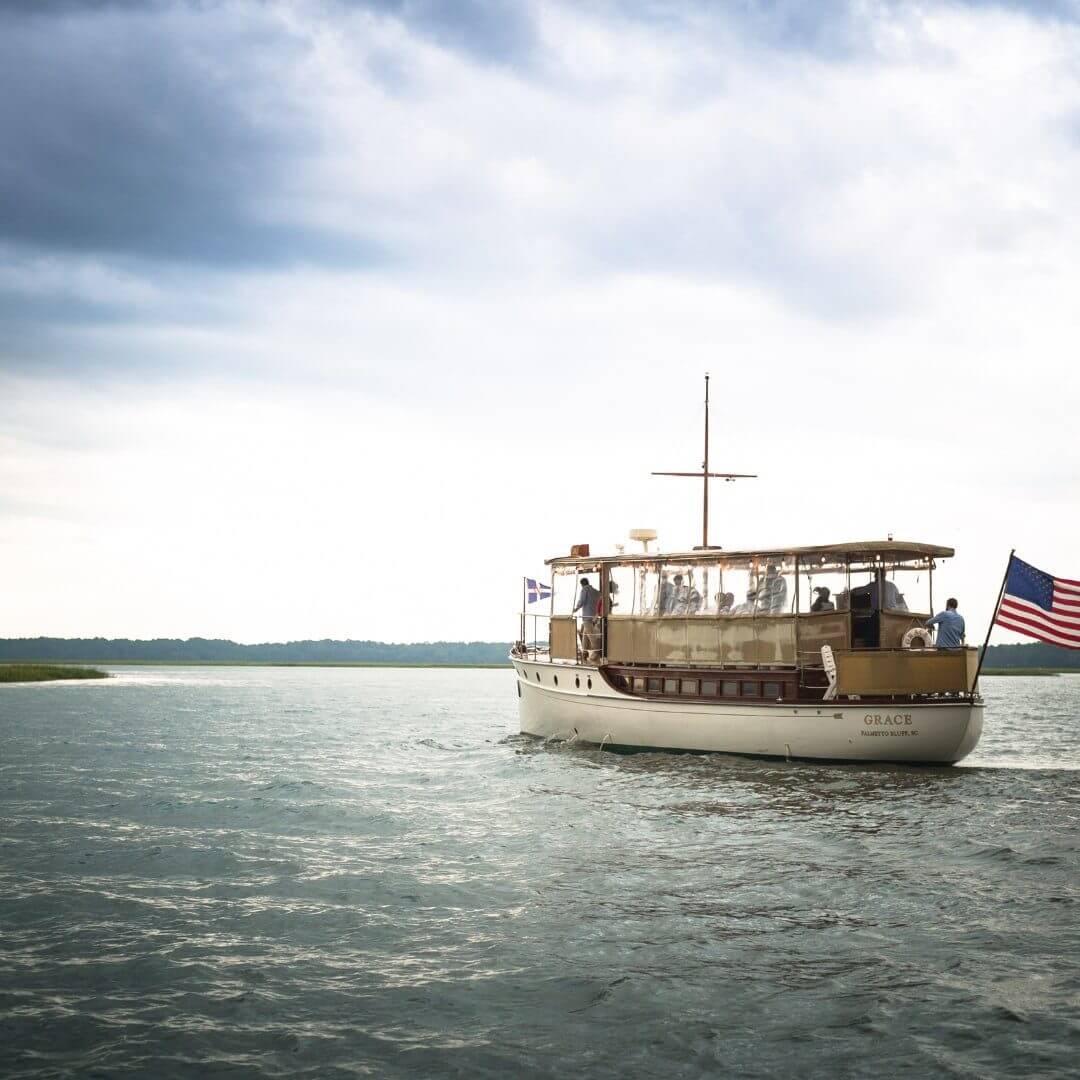Home » Conservancy Home » Ecological Research
Ecological Research
The Palmetto Bluff Conservancy’s ecological research program studies imperiled species, historically understudied groups, and species sensitive to landscape-level changes. We prioritize understanding how these organisms interact with and persist within their changing environment. Education provides an effective way to promote conservation, and we encourage Palmetto Bluff residents, guests, and members of the public to participate in our research efforts. Through research as a conservation nonprofit, we assist the efforts of state, federal, and academic organizations to more fully understand Lowcountry ecology.
“In nature, nothing exists alone.”
- Rachel Carson
Research Initiatives
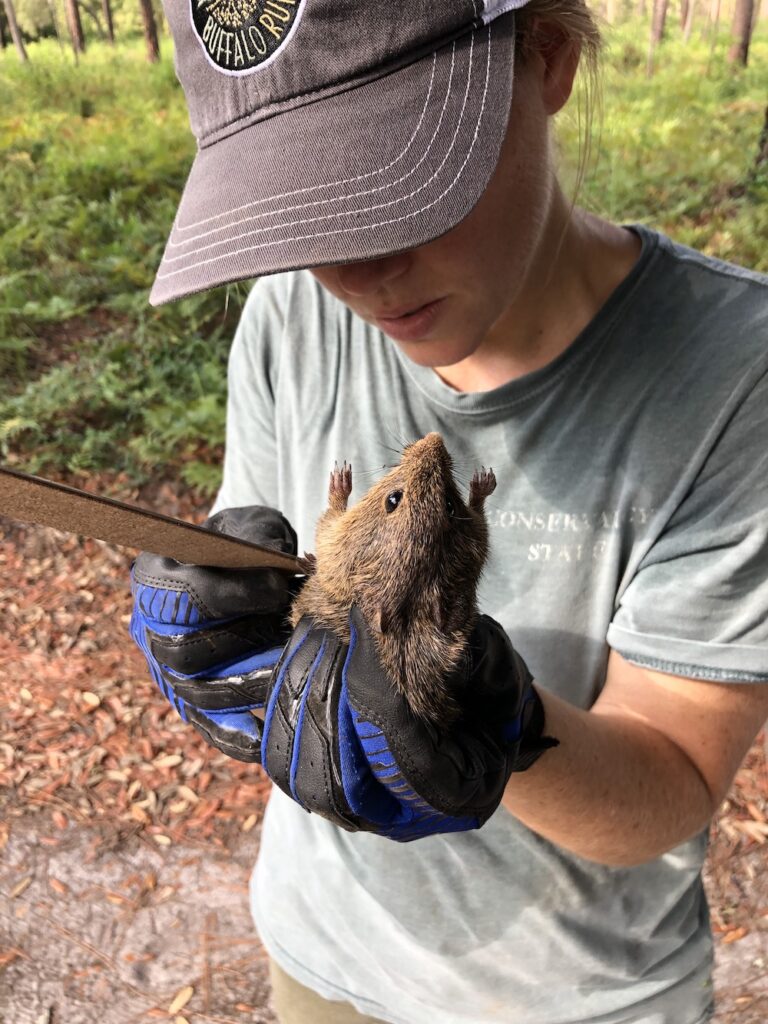
Small Mammal Communities
Rodents, comprising 40% of all mammals, include over 2,500 species worldwide. They play crucial roles in ecosystems by dispersing seeds and spores, pollinating plants, and serving as prey for predators like owls, bobcats, and foxes. A healthy rodent population is essential for a balanced ecosystem. With support from the Friends of the Palmetto Bluff Conservancy, the Conservancy conducted a mark-recapture study to examine local rodent communities at Palmetto Bluff.
The study aimed to assess seasonal shifts in small mammal communities across three habitats: maritime forest, upland pine forest, and saltwater marsh. Each habitat was sampled once per season over two years, with vegetation characteristics measured to understand seasonal changes in vegetation structure within each habitat.
Small mammals were captured using Sherman live traps and processed before being released. The goal is to revisit these sites in a decade to observe potential changes in small mammal communities due to habitat alterations.
The maritime forest exhibited the highest species diversity, with captures including rice rats, hispid cotton rats, cotton mice, flying squirrels, and a single golden mouse. Despite this diversity, it had the lowest abundance of individuals. Conversely, the saltwater marsh had the highest number of captures, predominantly rice rats.
Download a PDF to read more about Common Native Rodents of Palmetto Bluff.
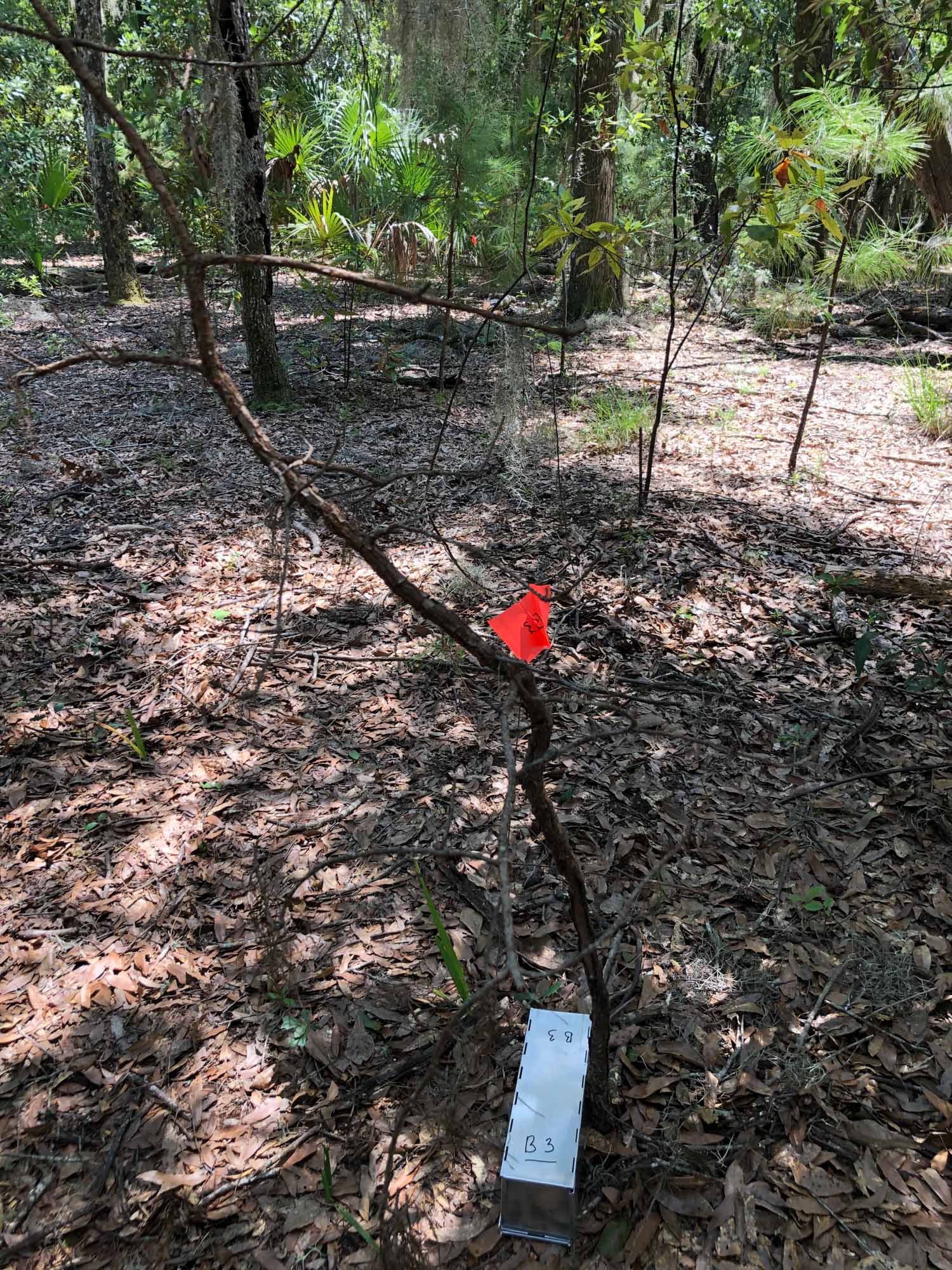
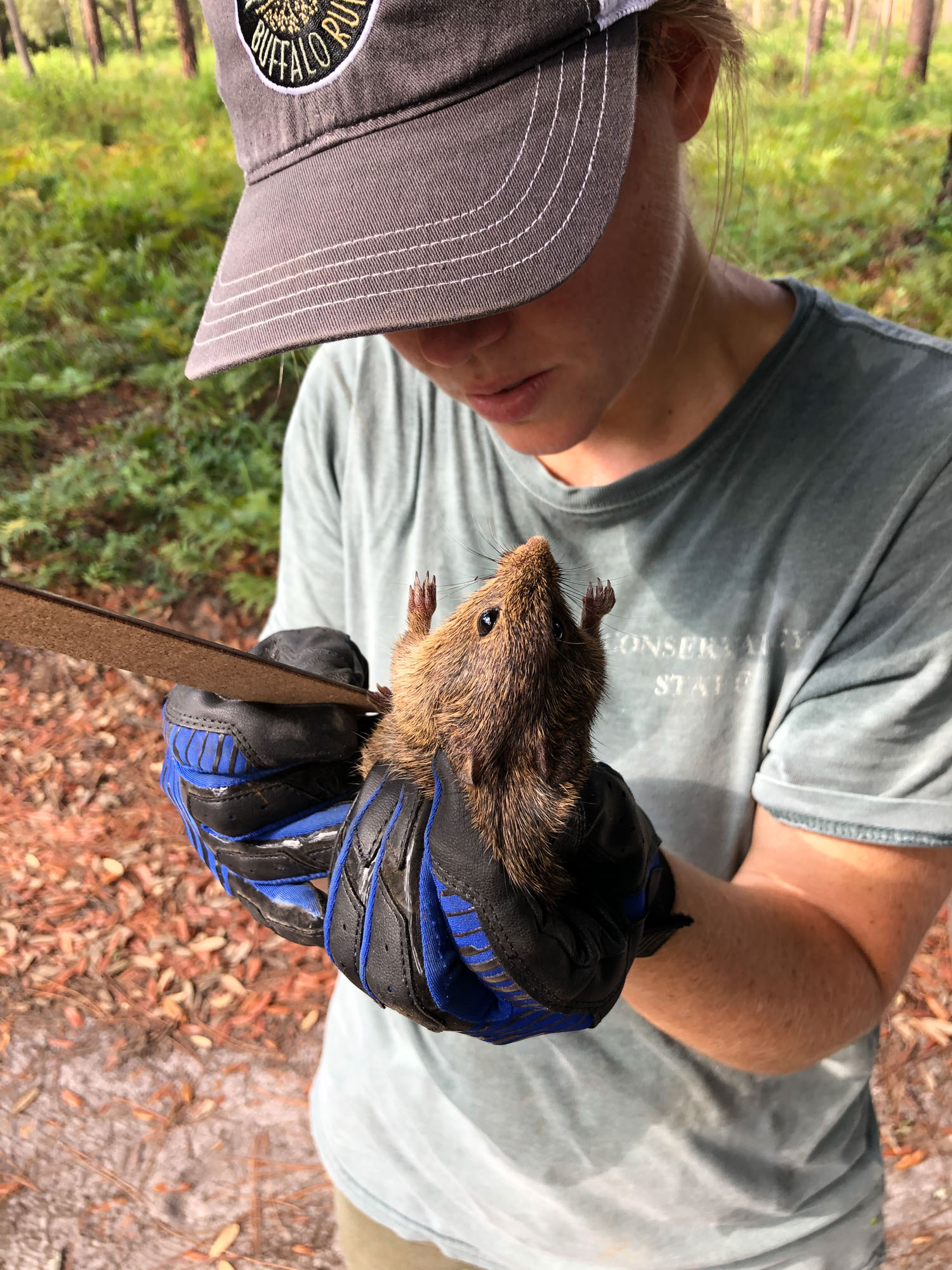
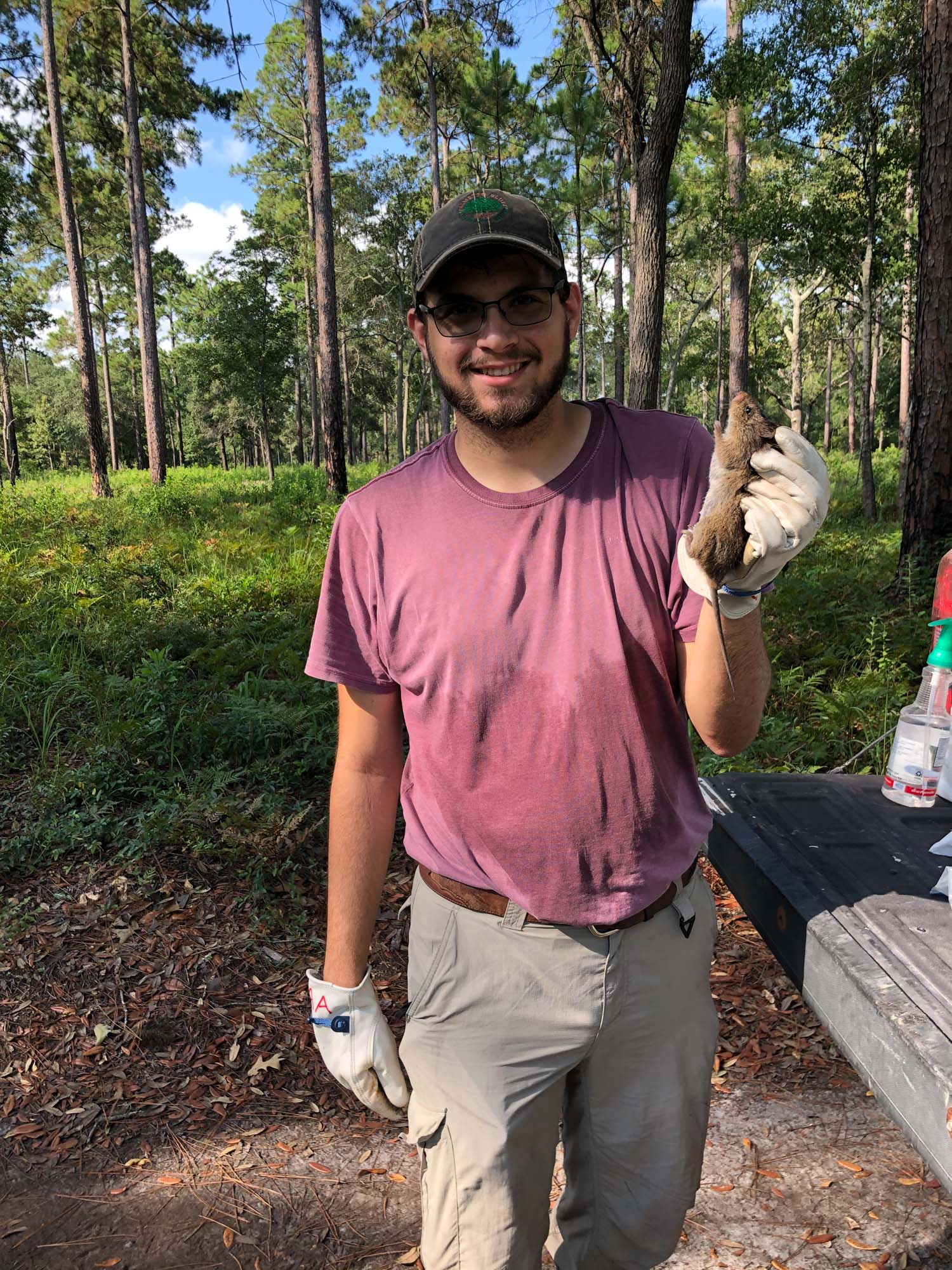
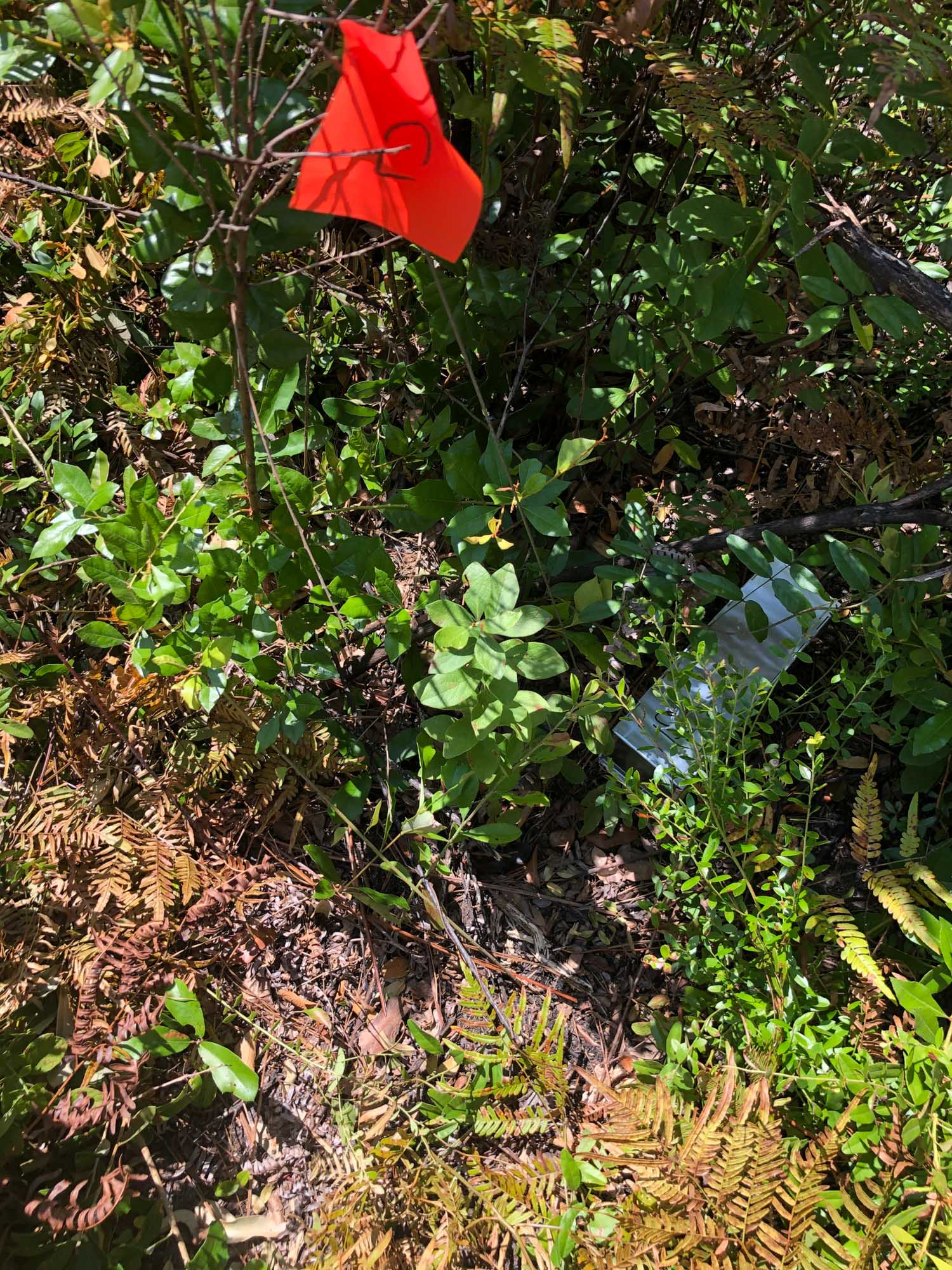
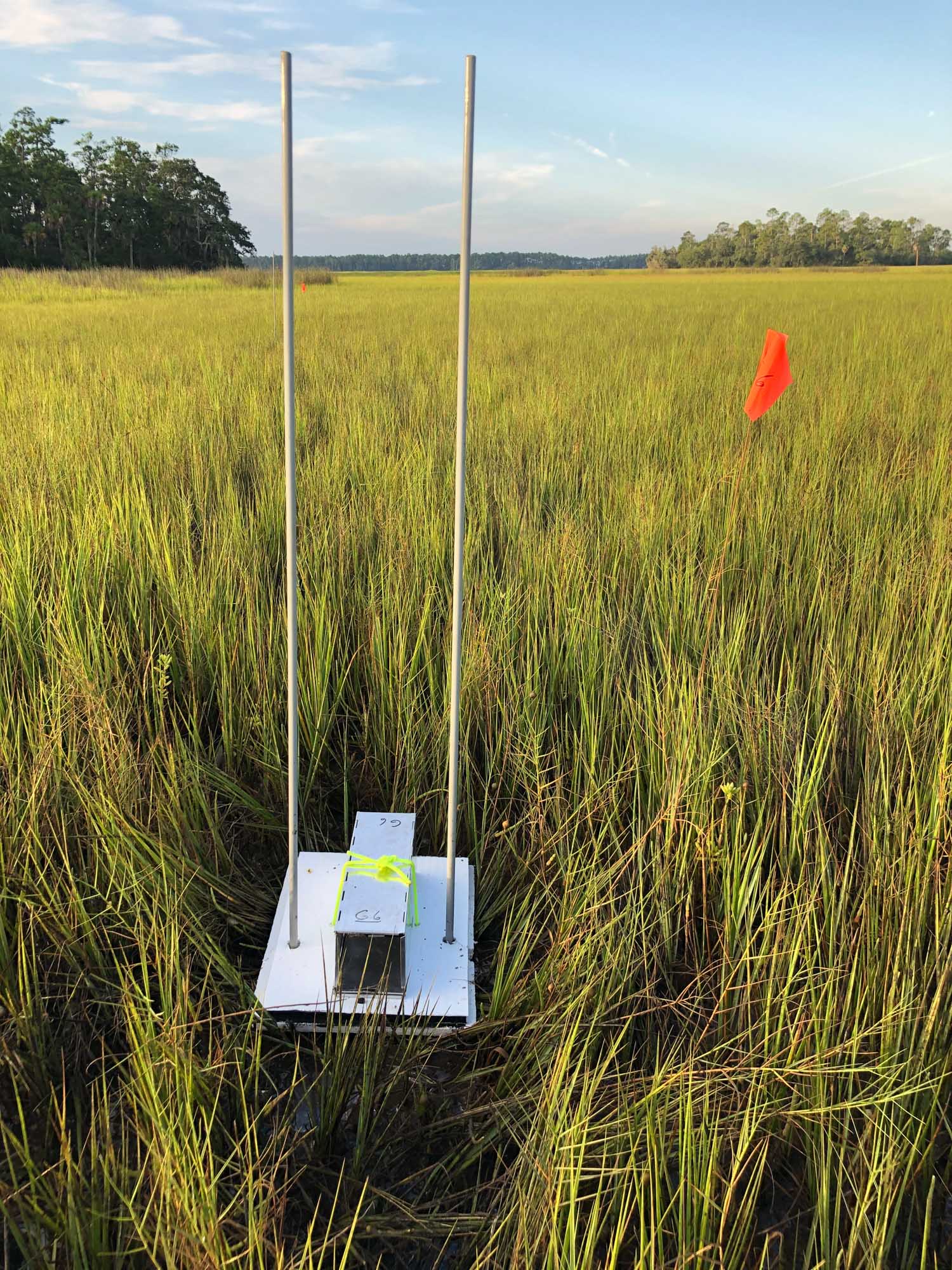
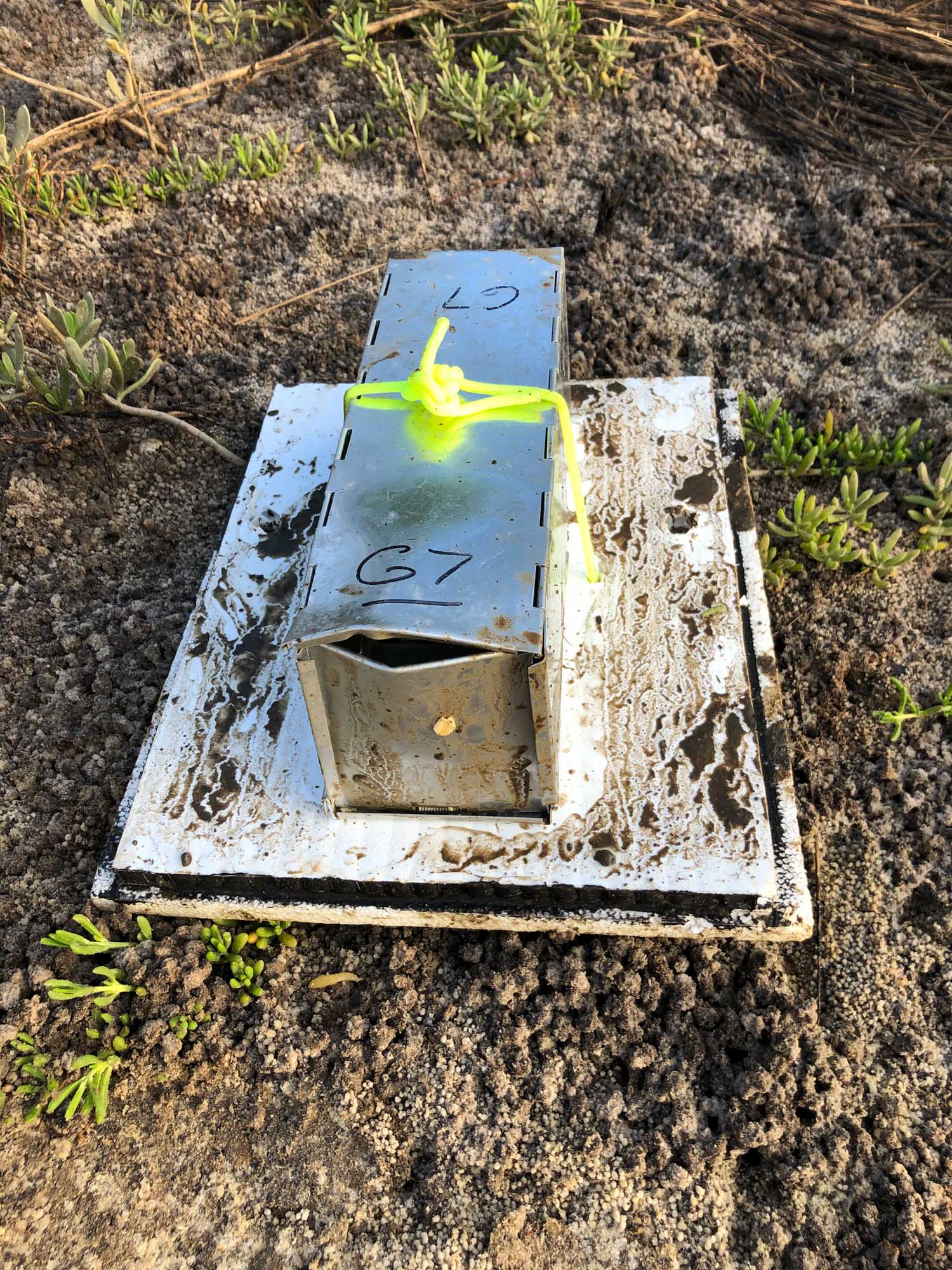
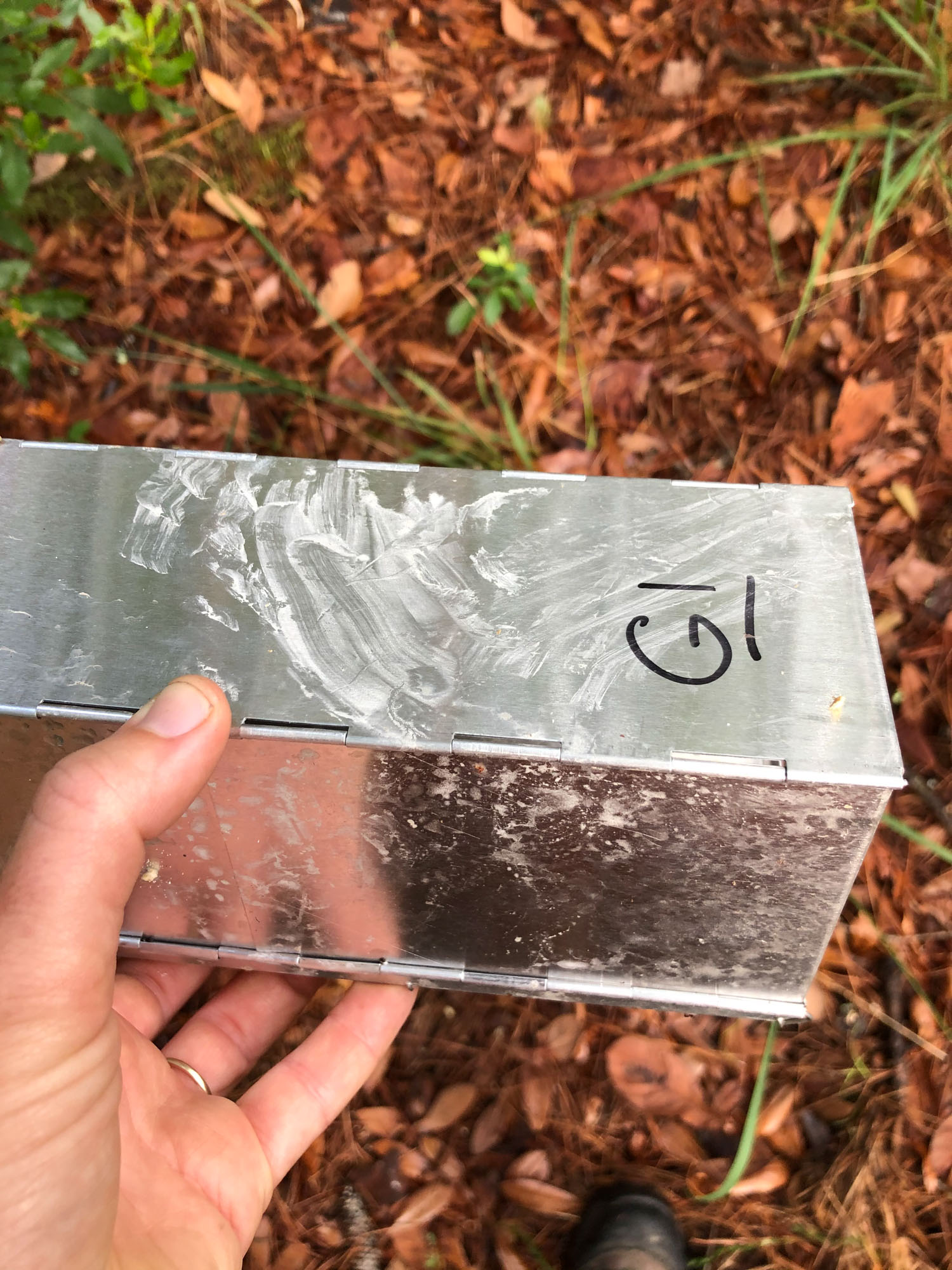
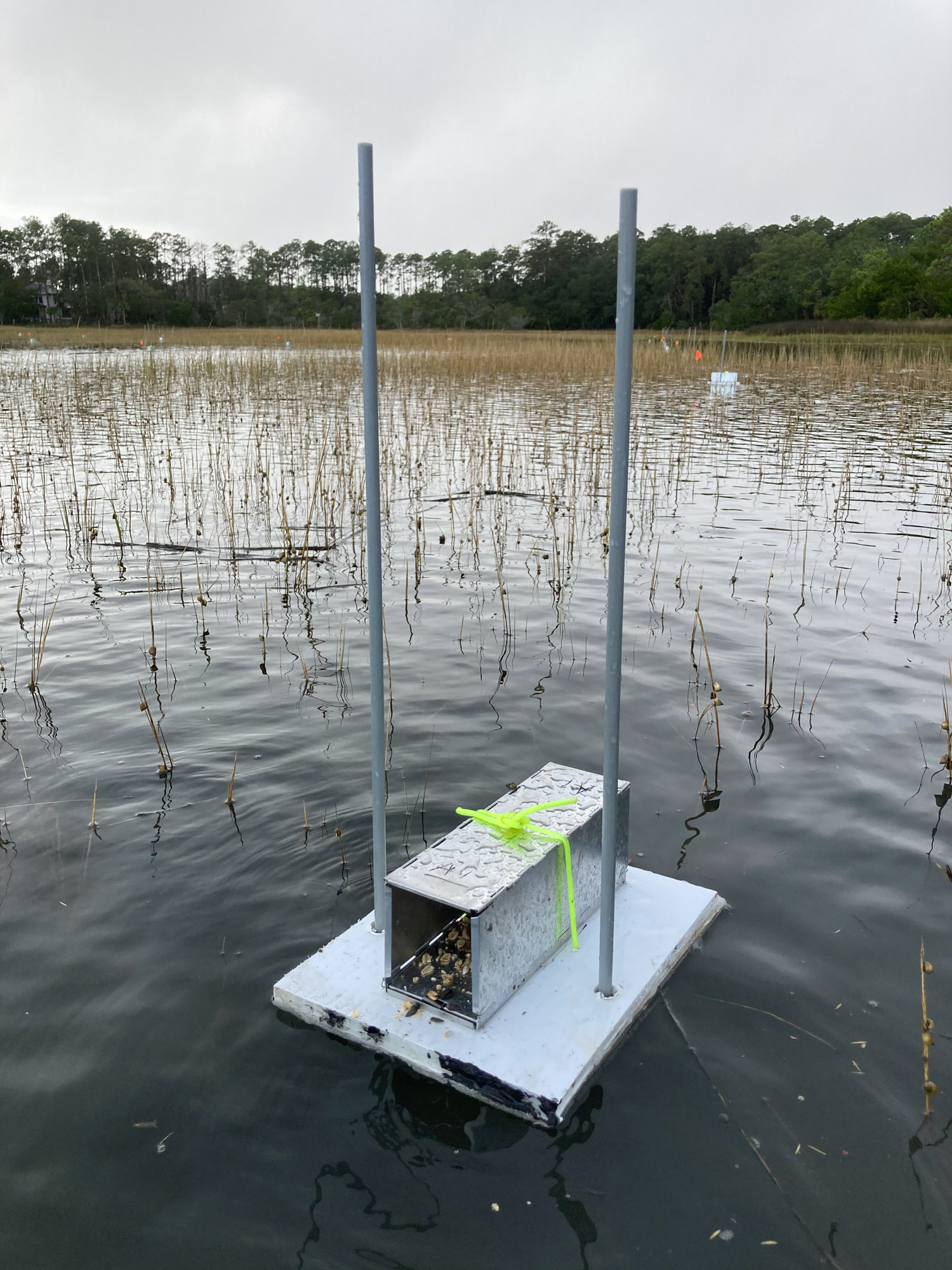
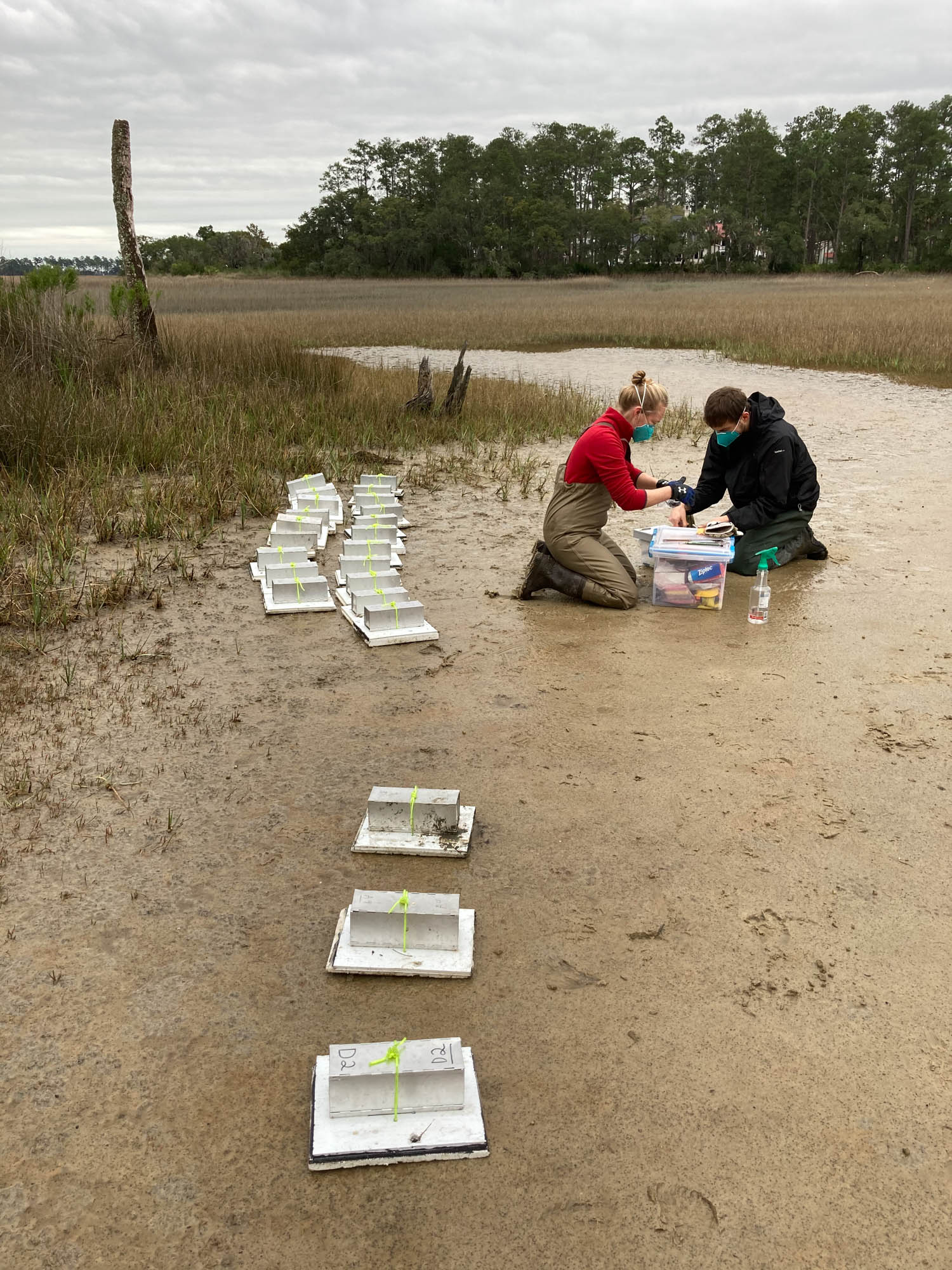
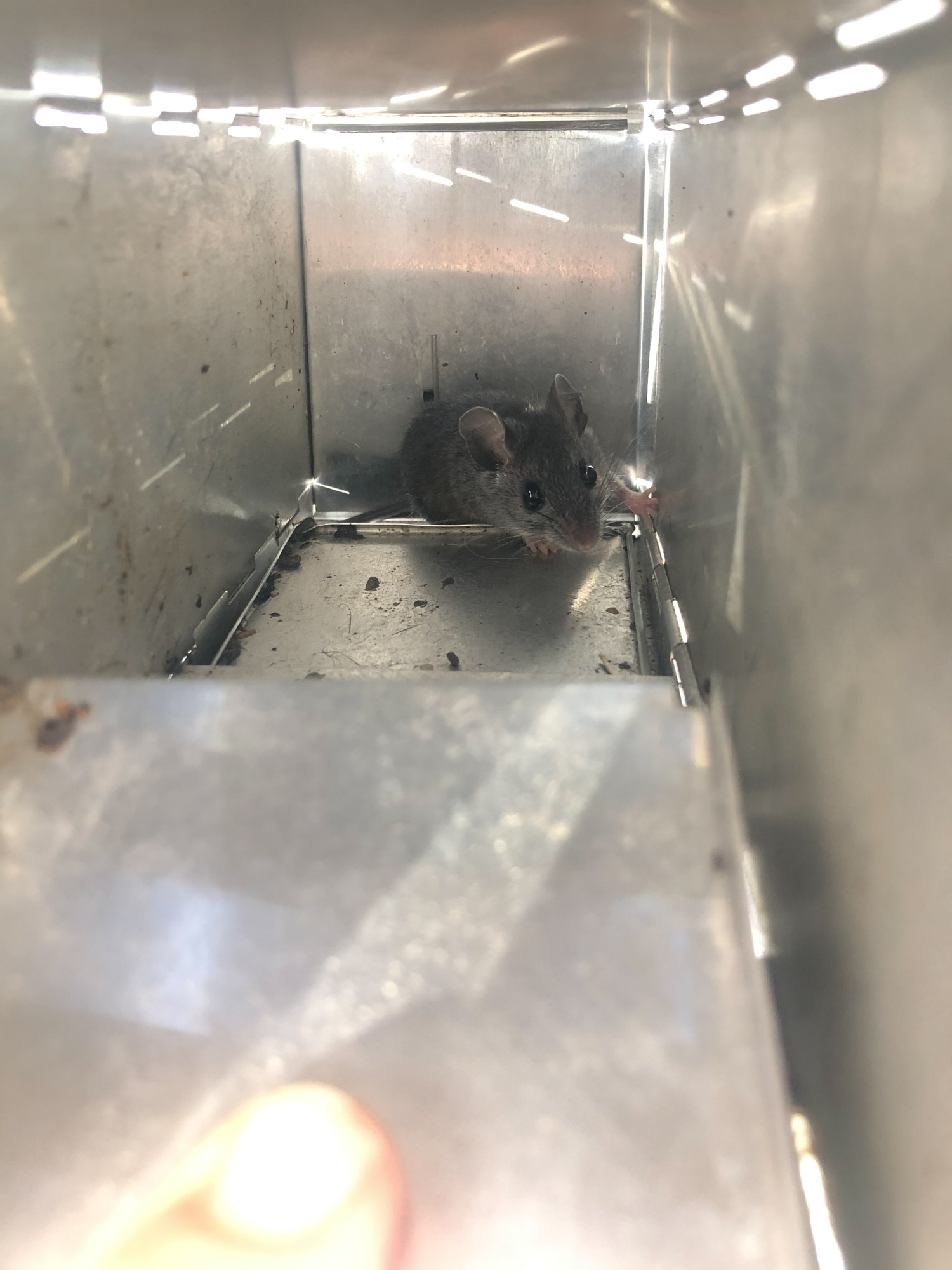
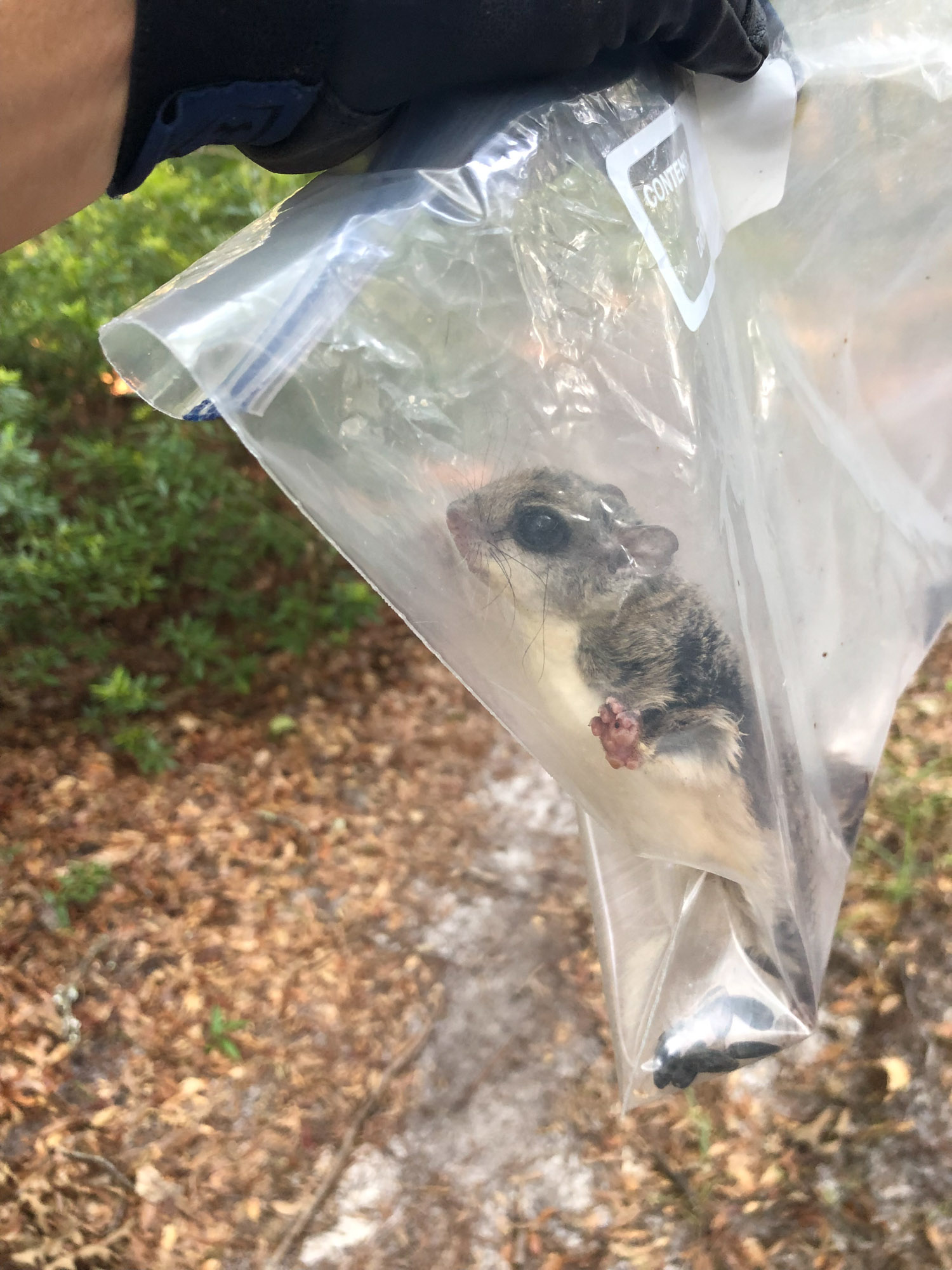
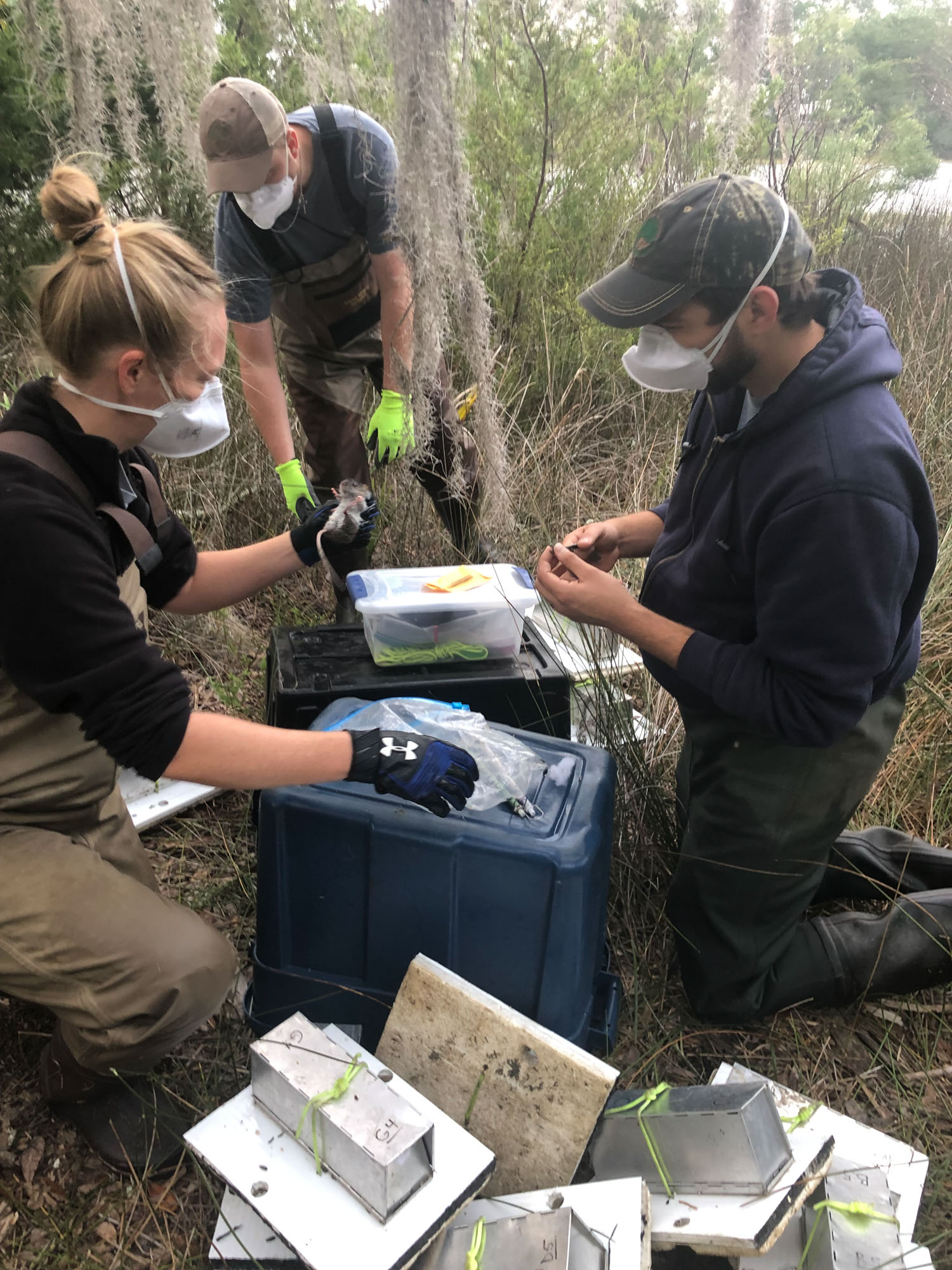

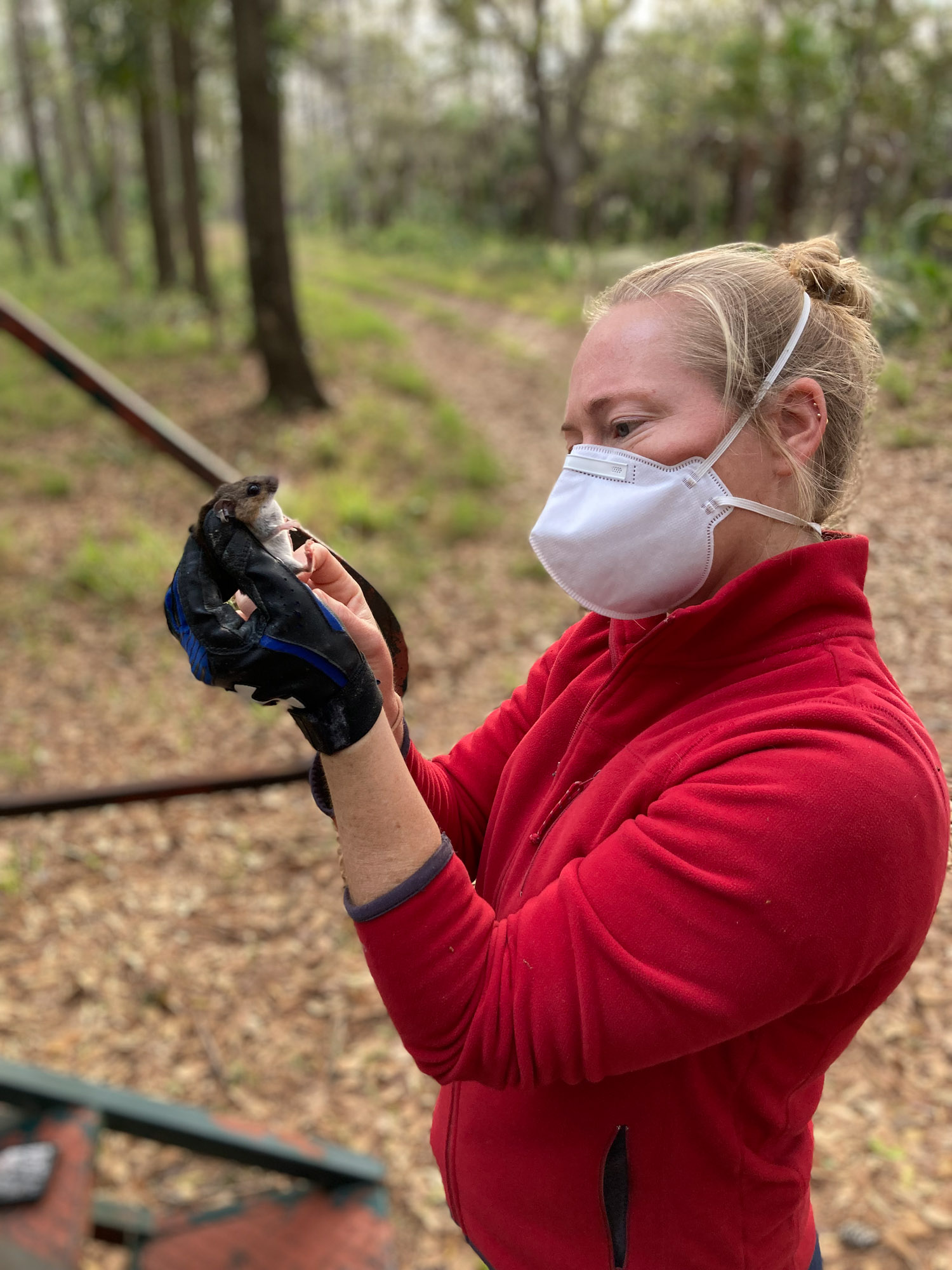
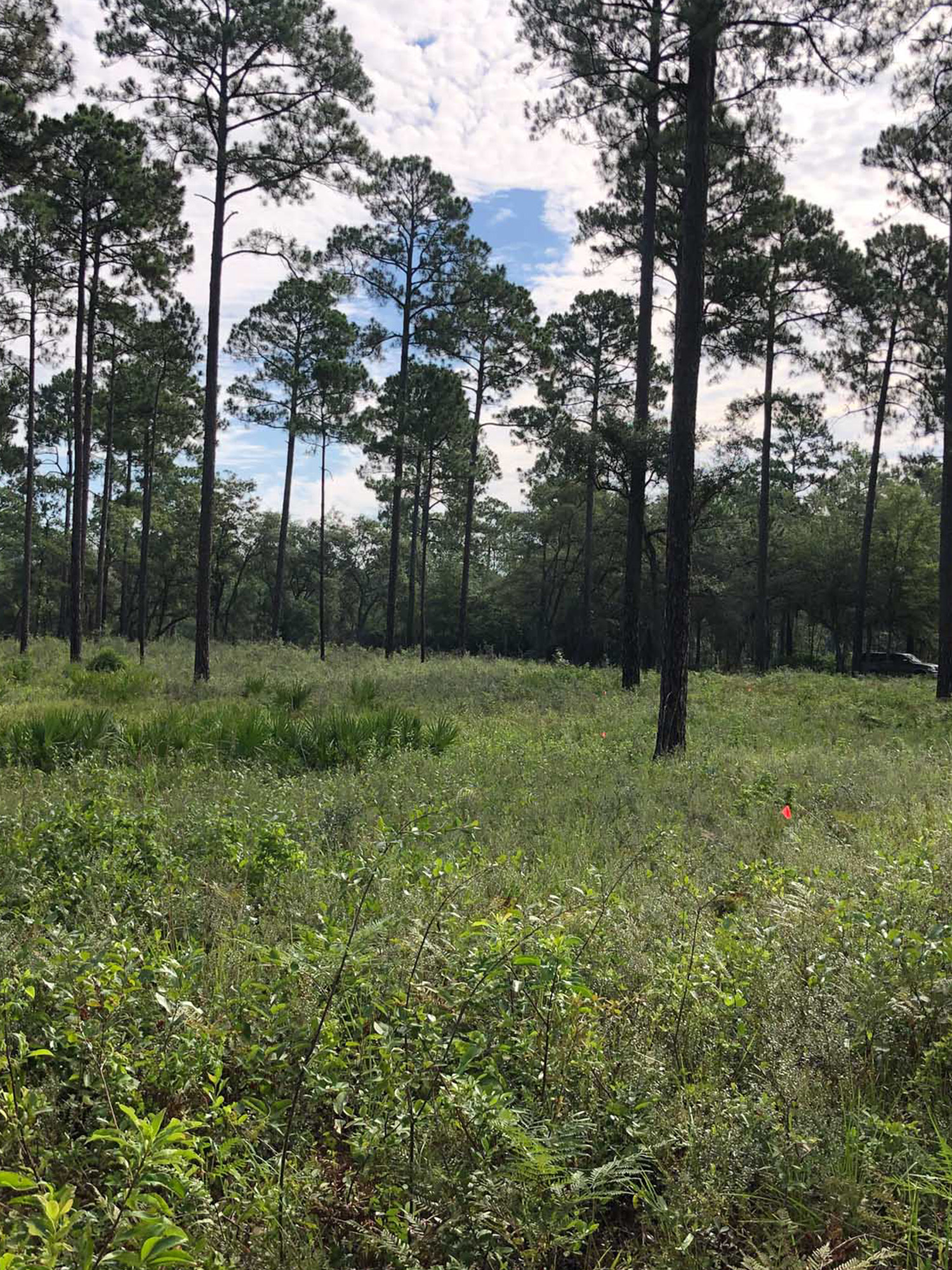
RESEARCH
INITIATIVES
INITIATIVES

Small Mammal Communities
Rodents, comprising 40% of all mammals, include over 2,500 species worldwide. They play crucial roles in ecosystems by dispersing seeds and spores, pollinating plants, and serving as prey for predators like owls, bobcats, and foxes. A healthy rodent population is essential for a balanced ecosystem. With support from the Friends of the Palmetto Bluff Conservancy, the Conservancy conducted a mark-recapture study to examine local rodent communities at Palmetto Bluff.
The study aimed to assess seasonal shifts in small mammal communities across three habitats: maritime forest, upland pine forest, and saltwater marsh. Each habitat was sampled once per season over two years, with vegetation characteristics measured to understand seasonal changes in vegetation structure within each habitat.
Small mammals were captured using Sherman live traps and processed before being released. The goal is to revisit these sites in a decade to observe potential changes in small mammal communities due to habitat alterations.
The maritime forest exhibited the highest species diversity, with captures including rice rats, hispid cotton rats, cotton mice, flying squirrels, and a single golden mouse. Despite this diversity, it had the lowest abundance of individuals. Conversely, the saltwater marsh had the highest number of captures, predominantly rice rats.
Download a PDF to read more about Common Native Rodents of Palmetto Bluff.















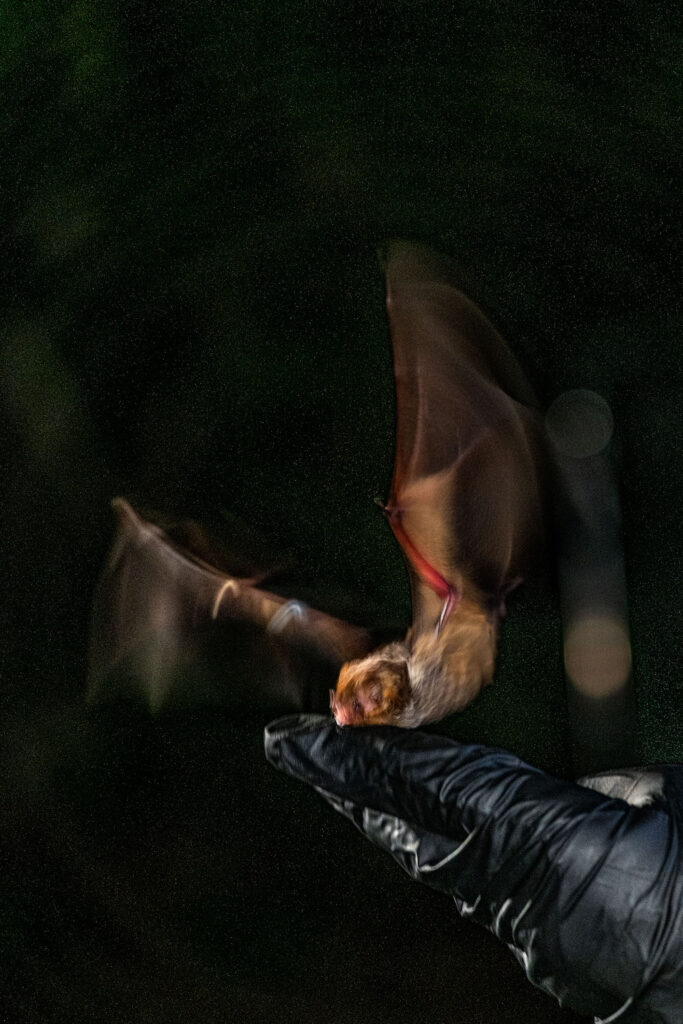
Biodiversity of Sensitive Species & Landscape-Level Changes
To understand the health of our ecological community, the Palmetto Bluff Conservancy needs to first focus on how species sensitive to environmental pressures are faring in the face of change. Through funding from the Friends of the Palmetto Bluff Conservancy, we partnered with the Avian Research and Conservation Institute (ARCI) to develop a project evaluating the change in avian diversity and community composition over time due to landscape-level changes.
Photo credit: Gregg Lambton-Carr
This project was initiated in 2021, and our first two years focused on avian communities during two seasons: the spring breeding season and winter residency. ARCI documented species’ presence and relative abundance using avian point-count surveys, and we quantified landscape-level features that may influence avian diversity through ground vegetation surveys and GIS. Our goal is to repeat this project several years from now to note any changes in the avian community structure.
Although this first phase of the initiative is centered on birds as a group sensitive to environmental changes, we are expanding this project to other sensitive groups, including bats and insects. Insect sampling began in the spring of 2023 using Malaise traps, which are tent-like traps used to collect flying insects such as flies, wasps, beetles, and true bugs. Through a partnership with Kennesaw State University, acoustic surveys for bats began in 2024 using ultrasonic bat detectors.
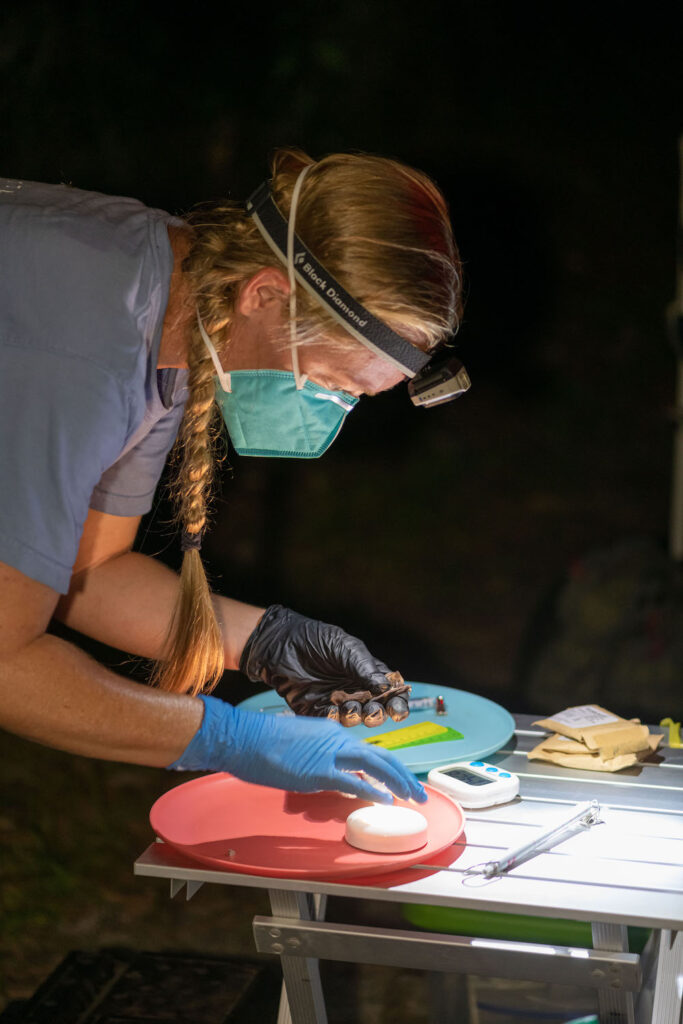
Monitoring Bat Populations
Palmetto Bluff was established as a long-term bat-monitoring site in 2015. The Palmetto Bluff Conservancy documents trends in bat populations by recording bats acoustically and by catching bats in mistnets. Captured bats are quickly processed and banded prior to their safe release. We survey bats year-round at Palmetto Bluff, but the bulk of our netting occurs from spring through fall. Nine species have been documented through mistnet surveys. Four species make up roughly 80% of our captures, including Seminole, big brown, evening, and tri-colored bats. The remaining 20% consists of eastern red, northern yellow, southeastern, Brazilian free-tailed, and northern long-eared bats.
In 2016, the first record of the federally threatened northern long-eared bat on the South Carolina coast occurred at Palmetto Bluff. Since then, other coastal populations have been discovered by SCDNR and private consultants. The 2022 Fish and Wildlife Service uplisting of northern long-eared bats from a threatened to endangered species – and the proposal of endangered listing for tri-colored bats – heightens the need for robust monitoring programs, like the one at Palmetto Bluff, along our coast.
Download a PDF to learn more about the Palmetto Bluff’s Conservancy’s bat research at the Bluff.
Photo credit: Gregg Lambton-Carr
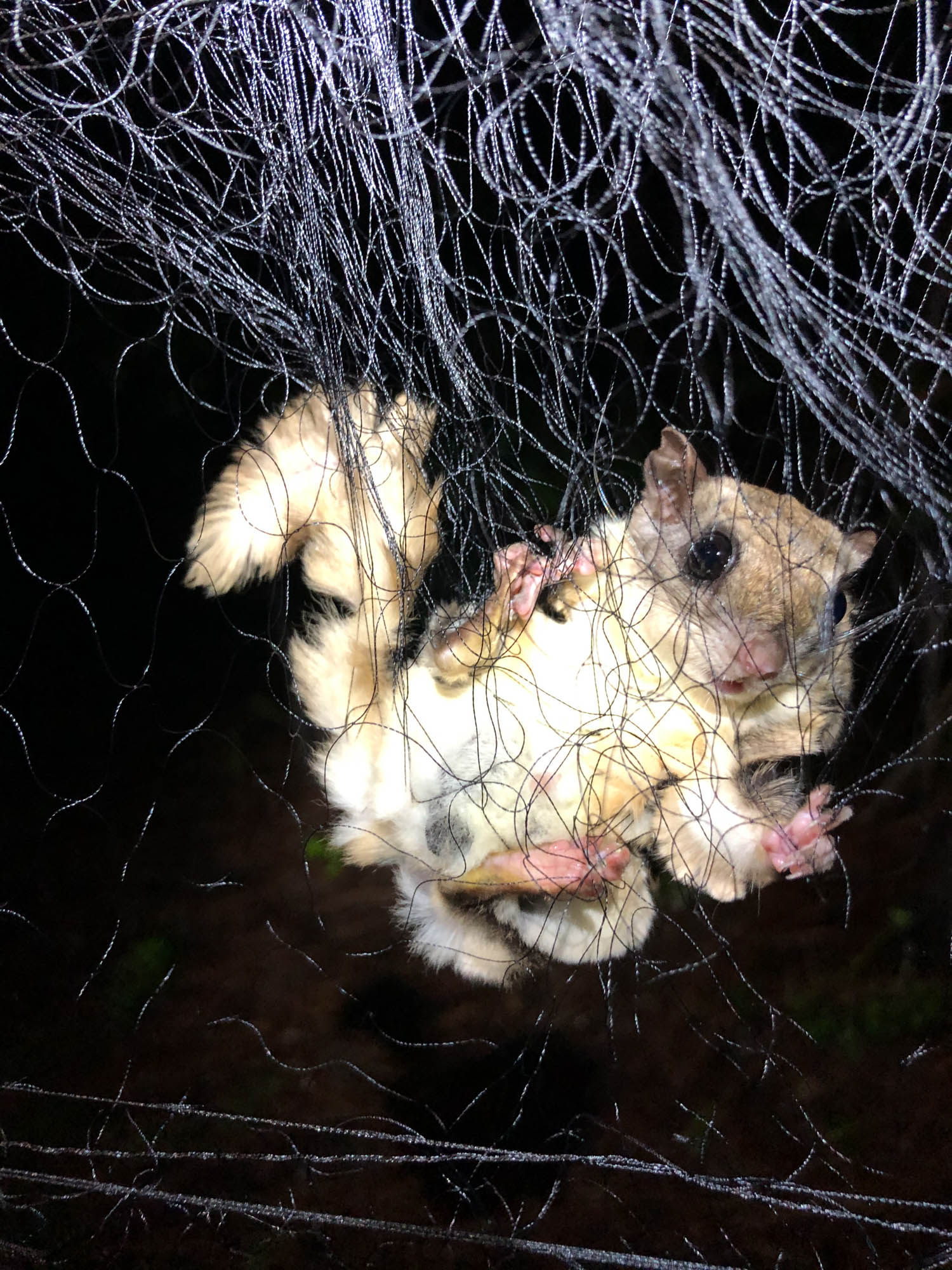
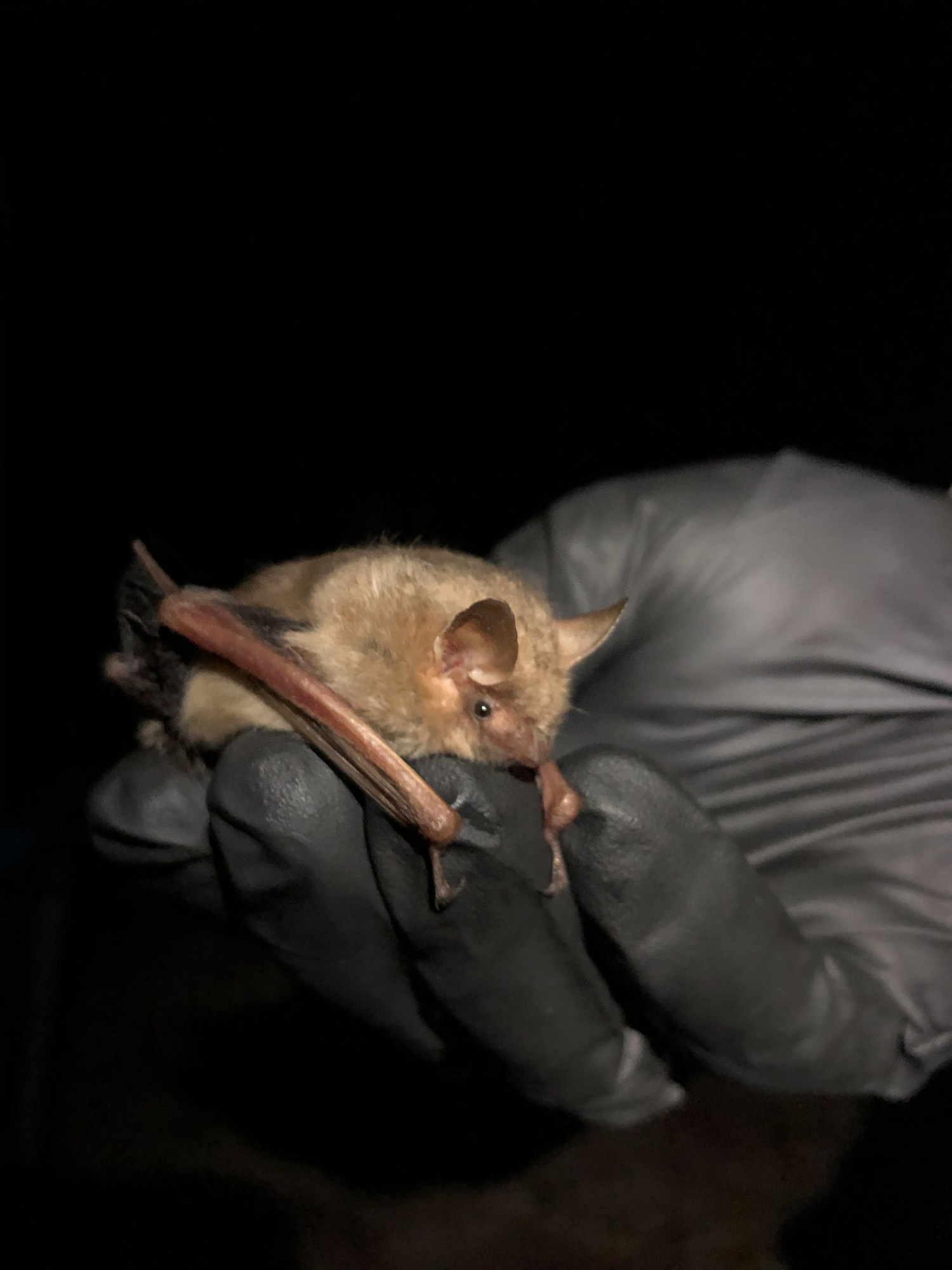
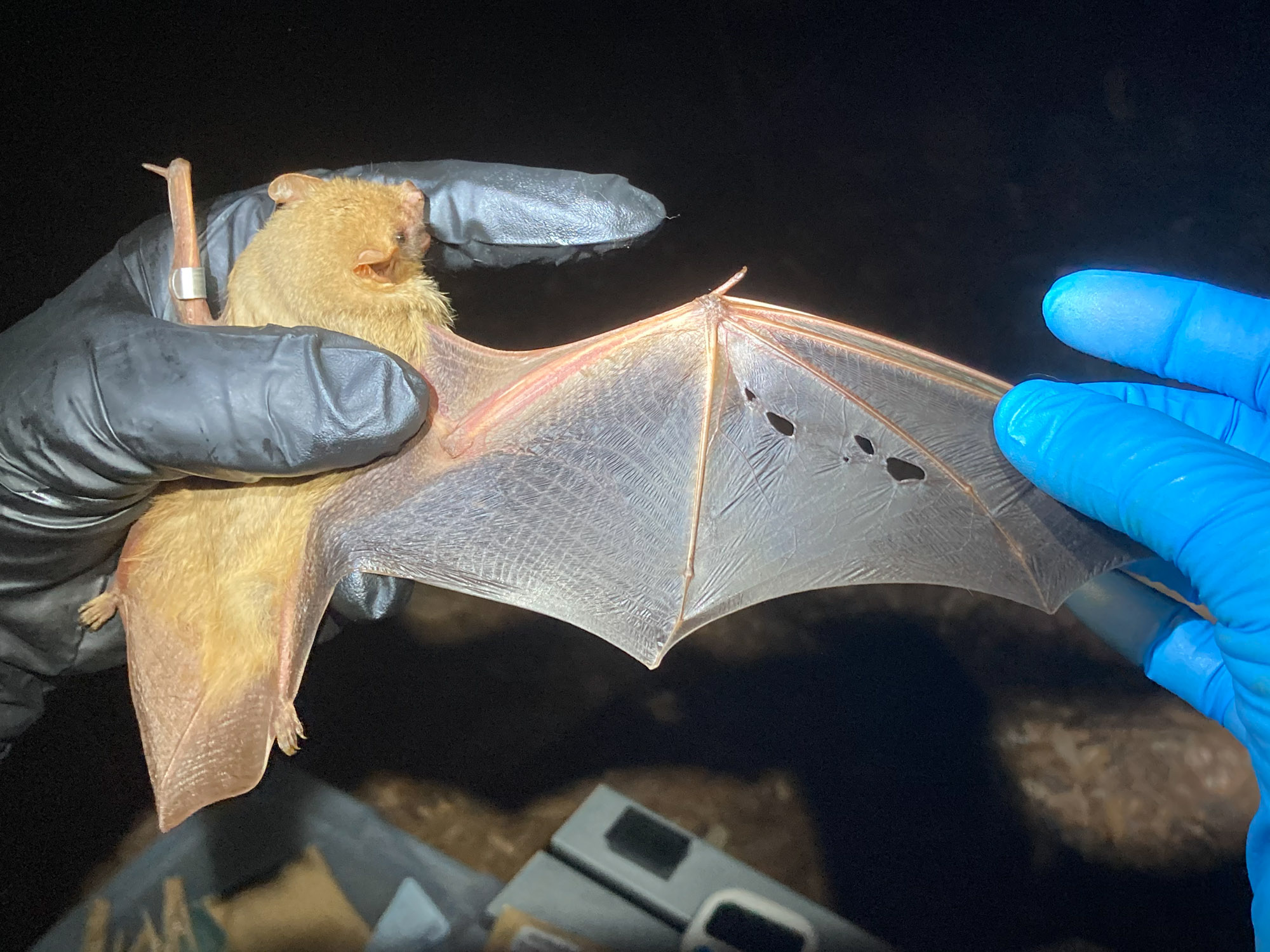
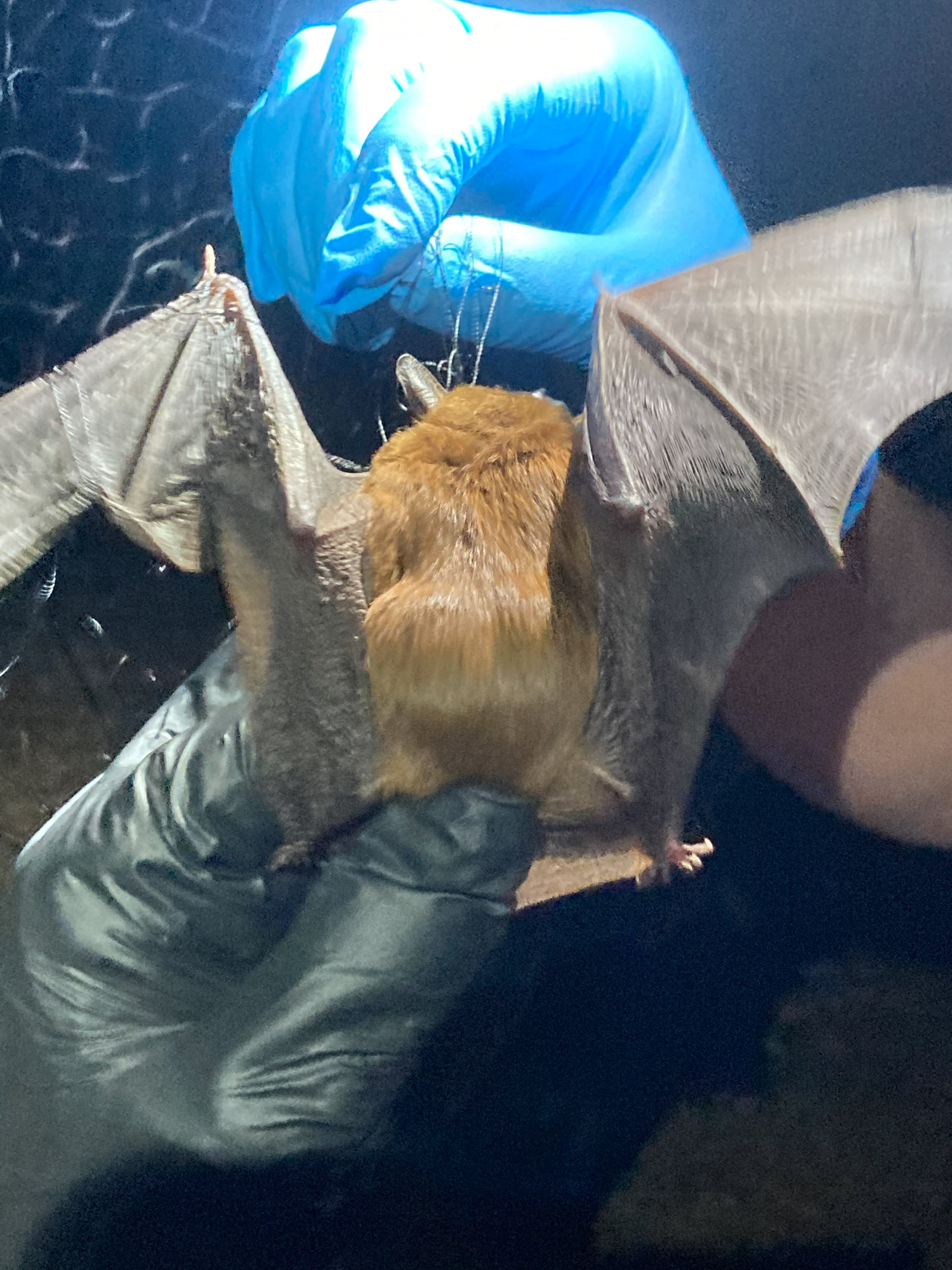
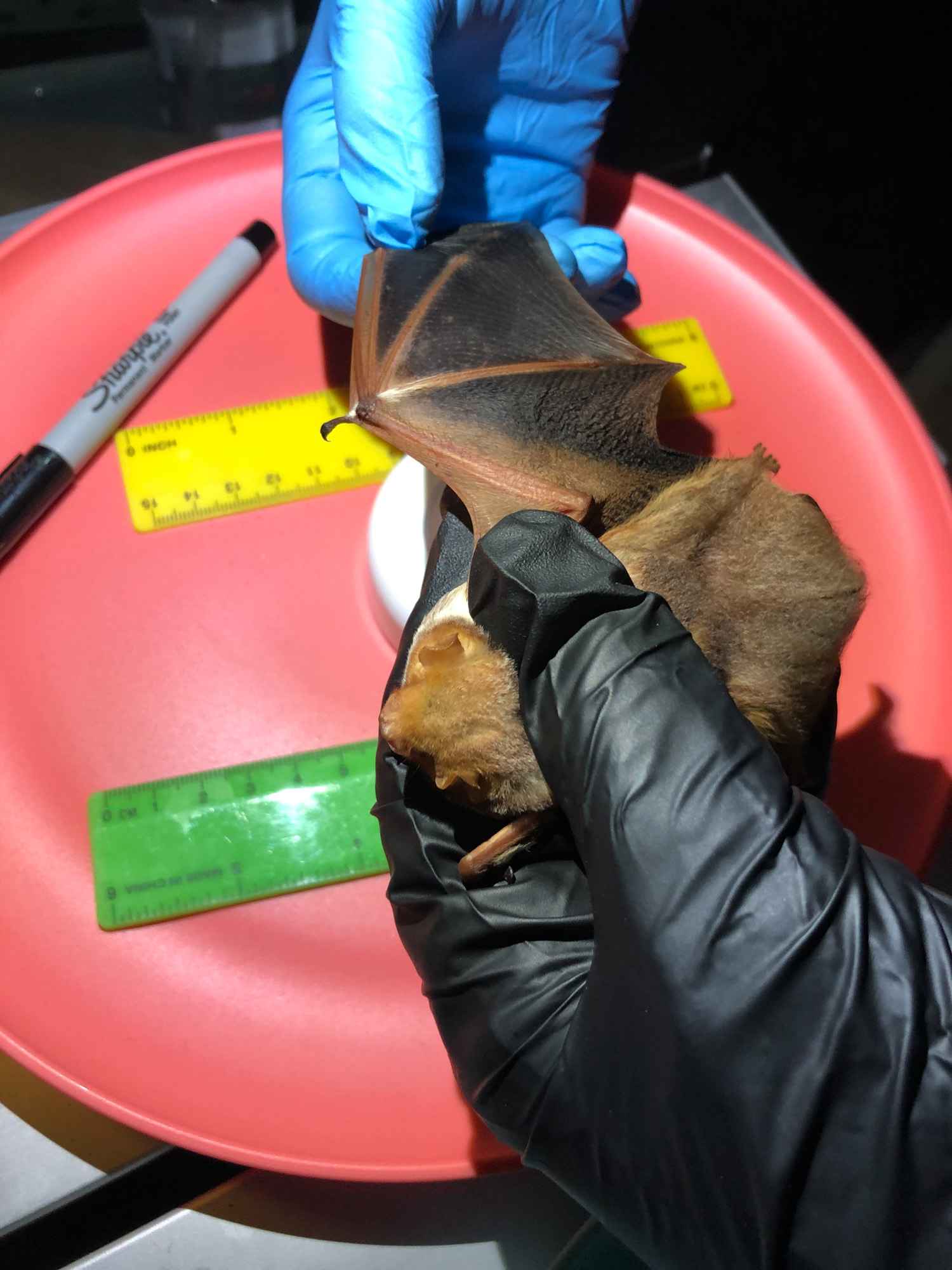
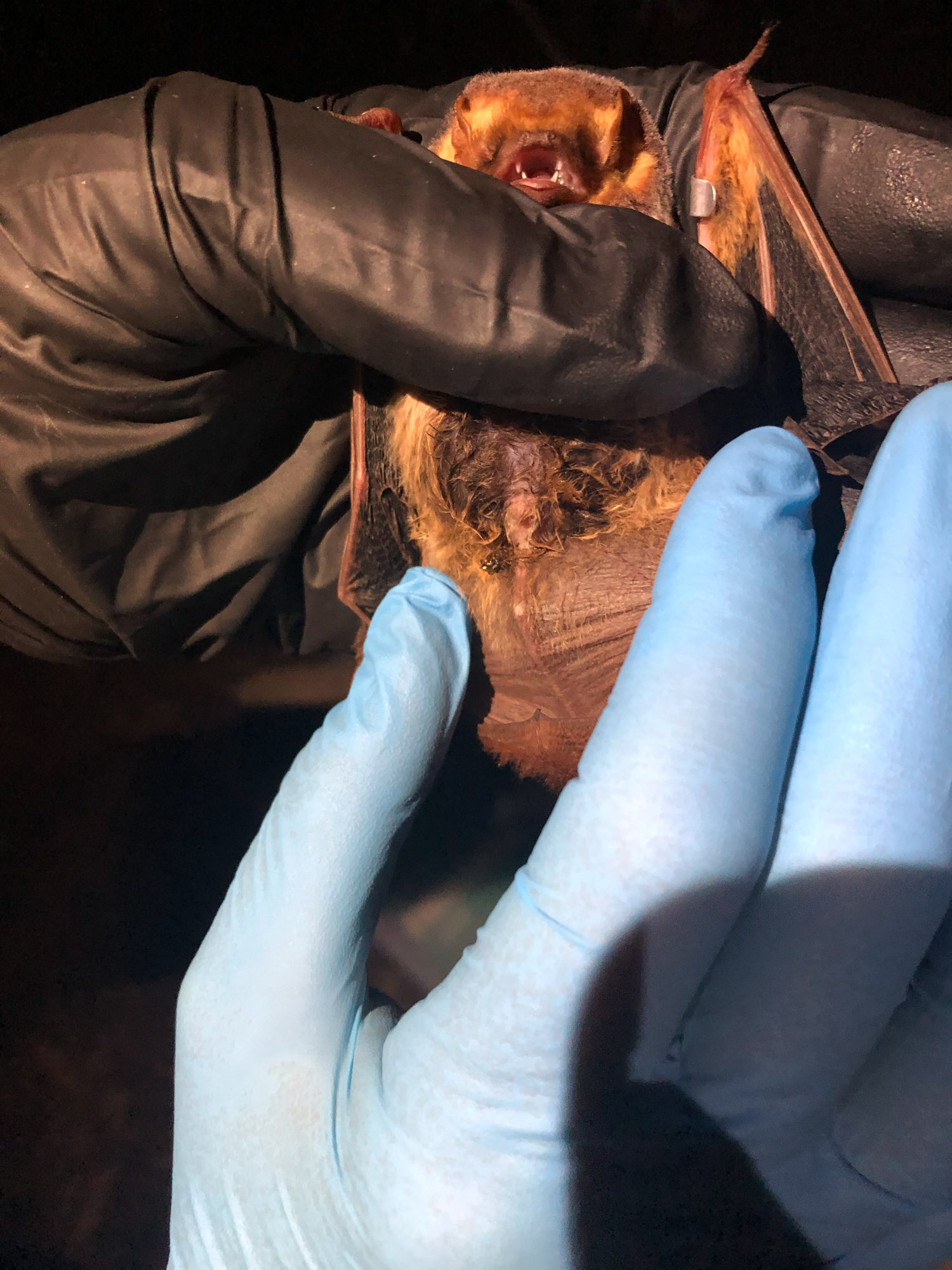
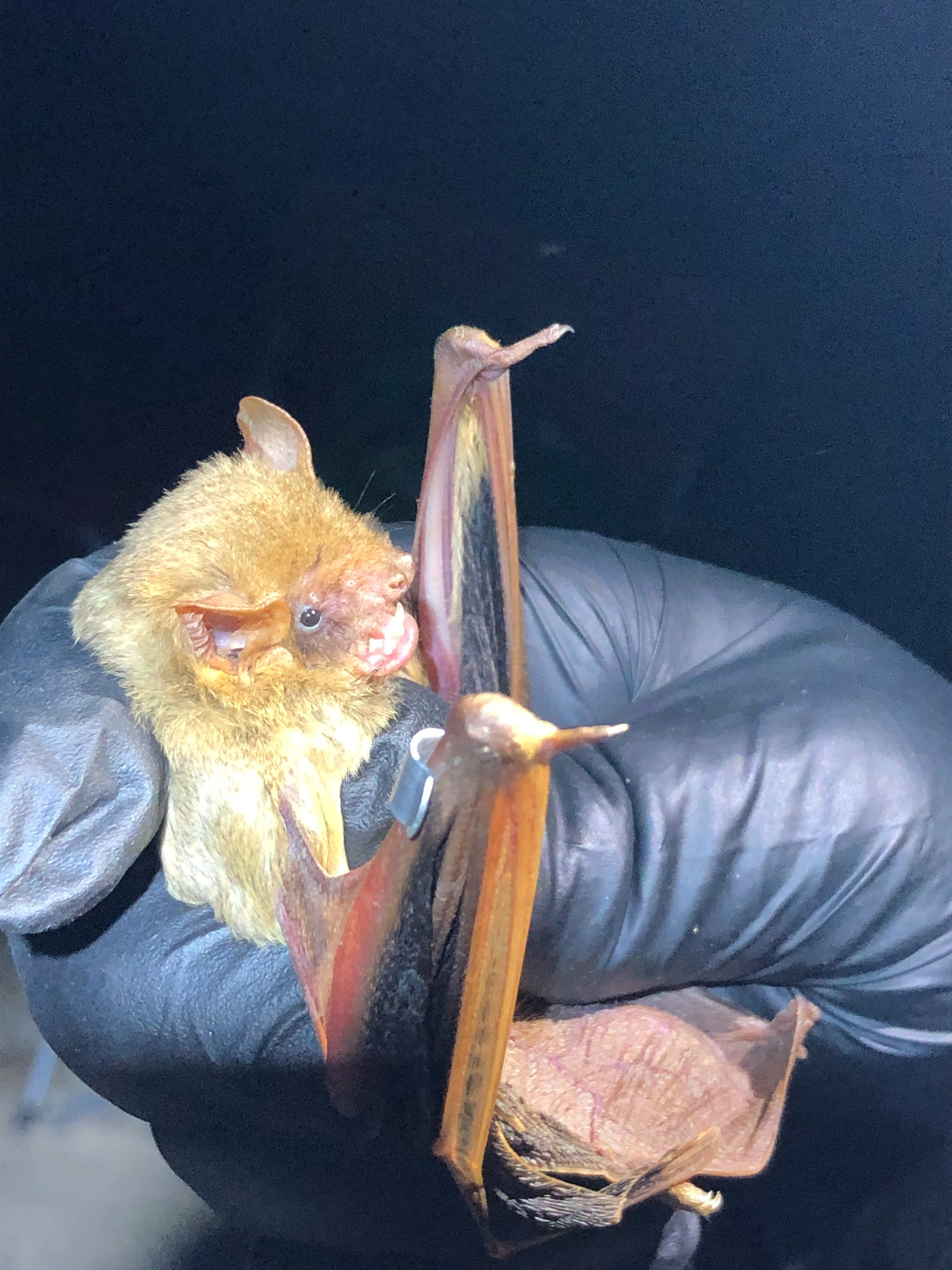
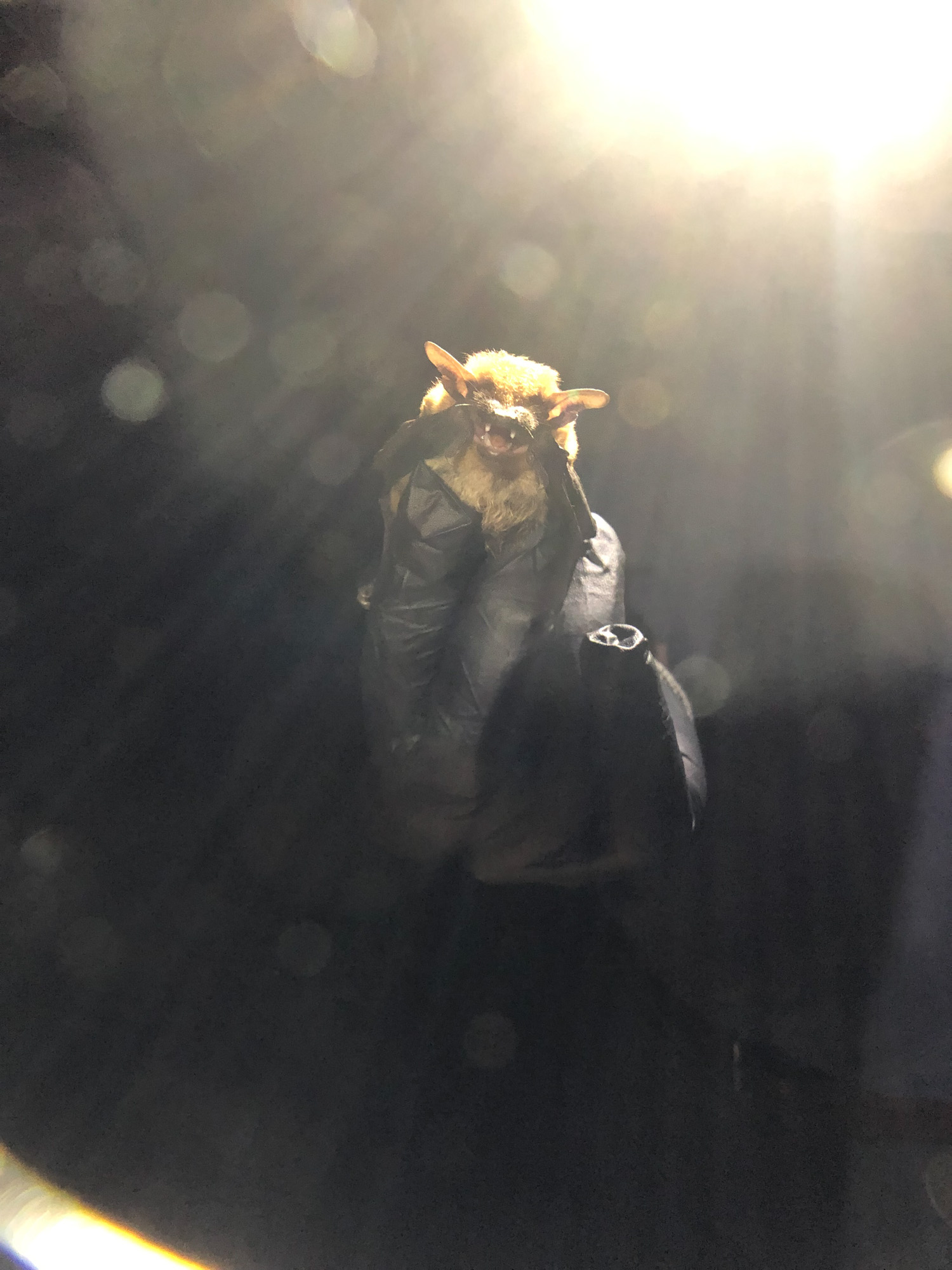
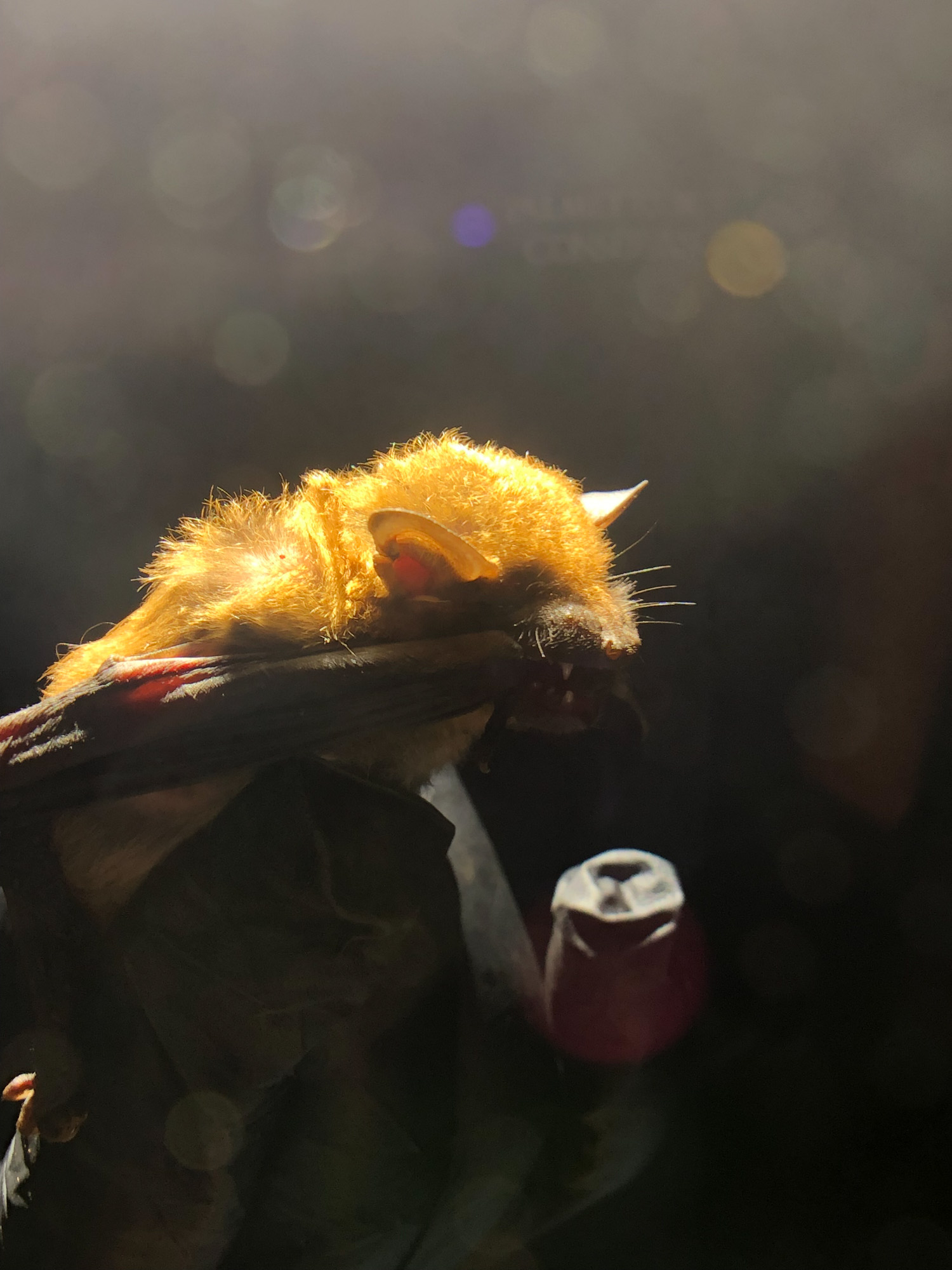
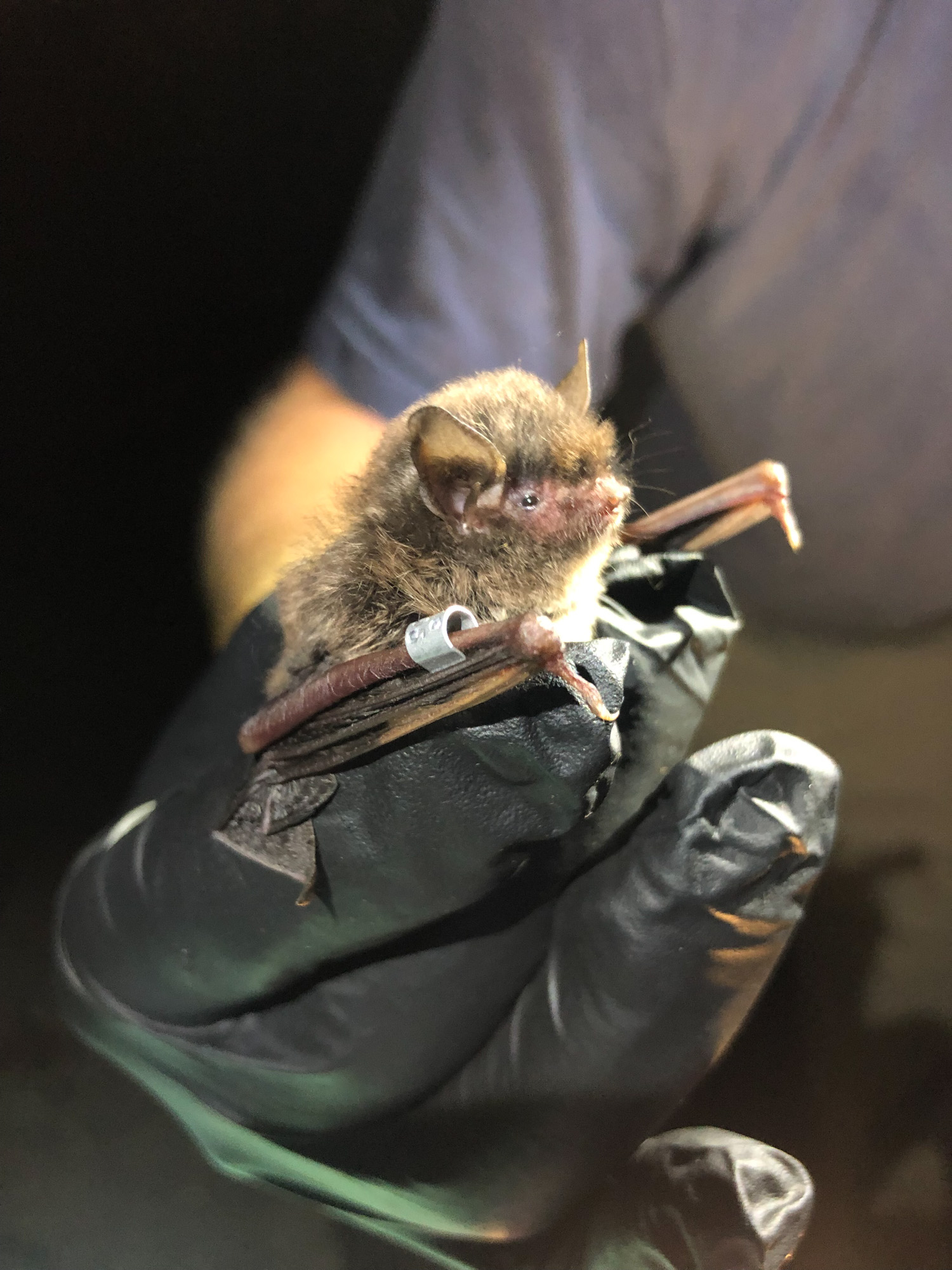
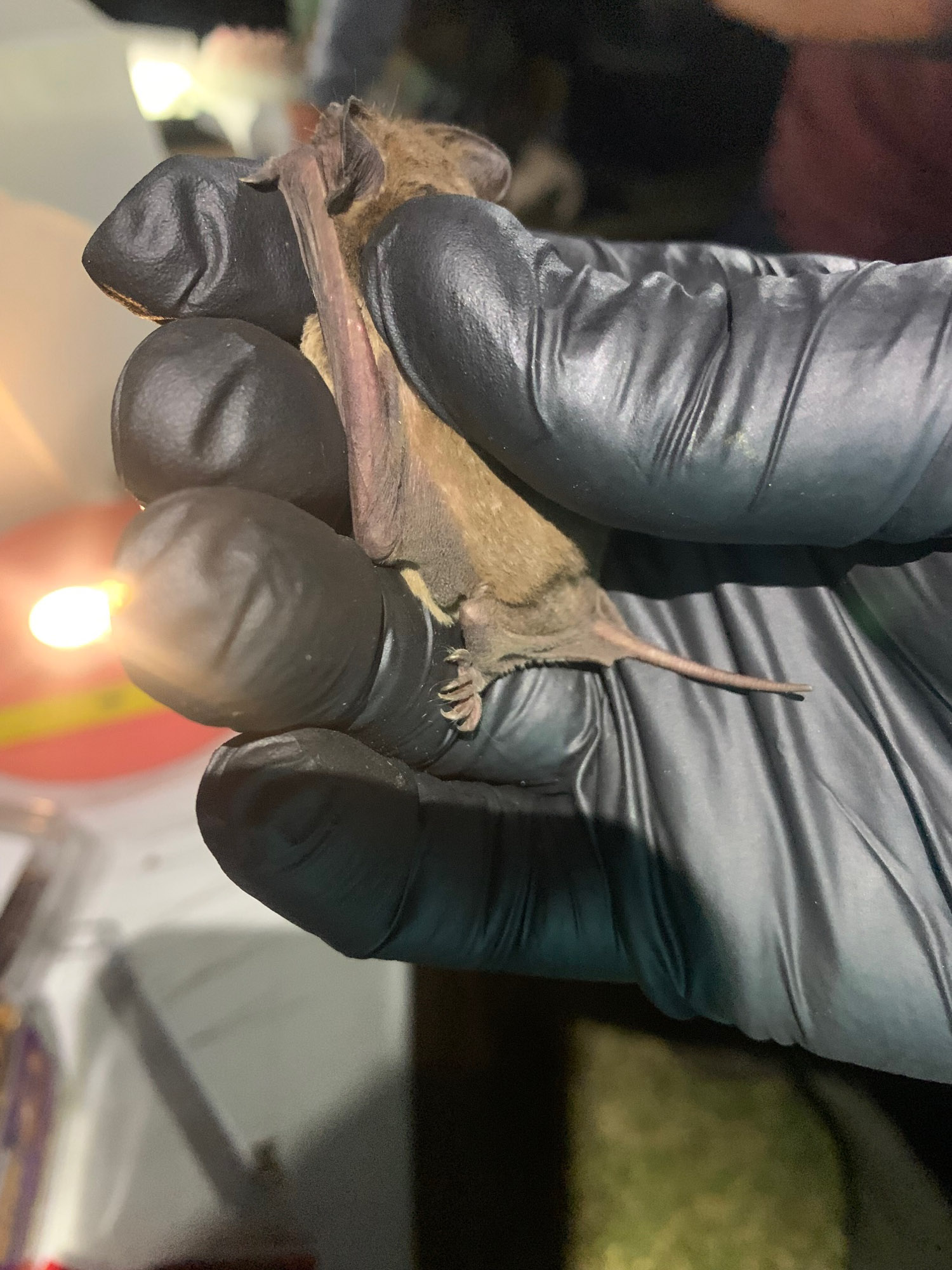
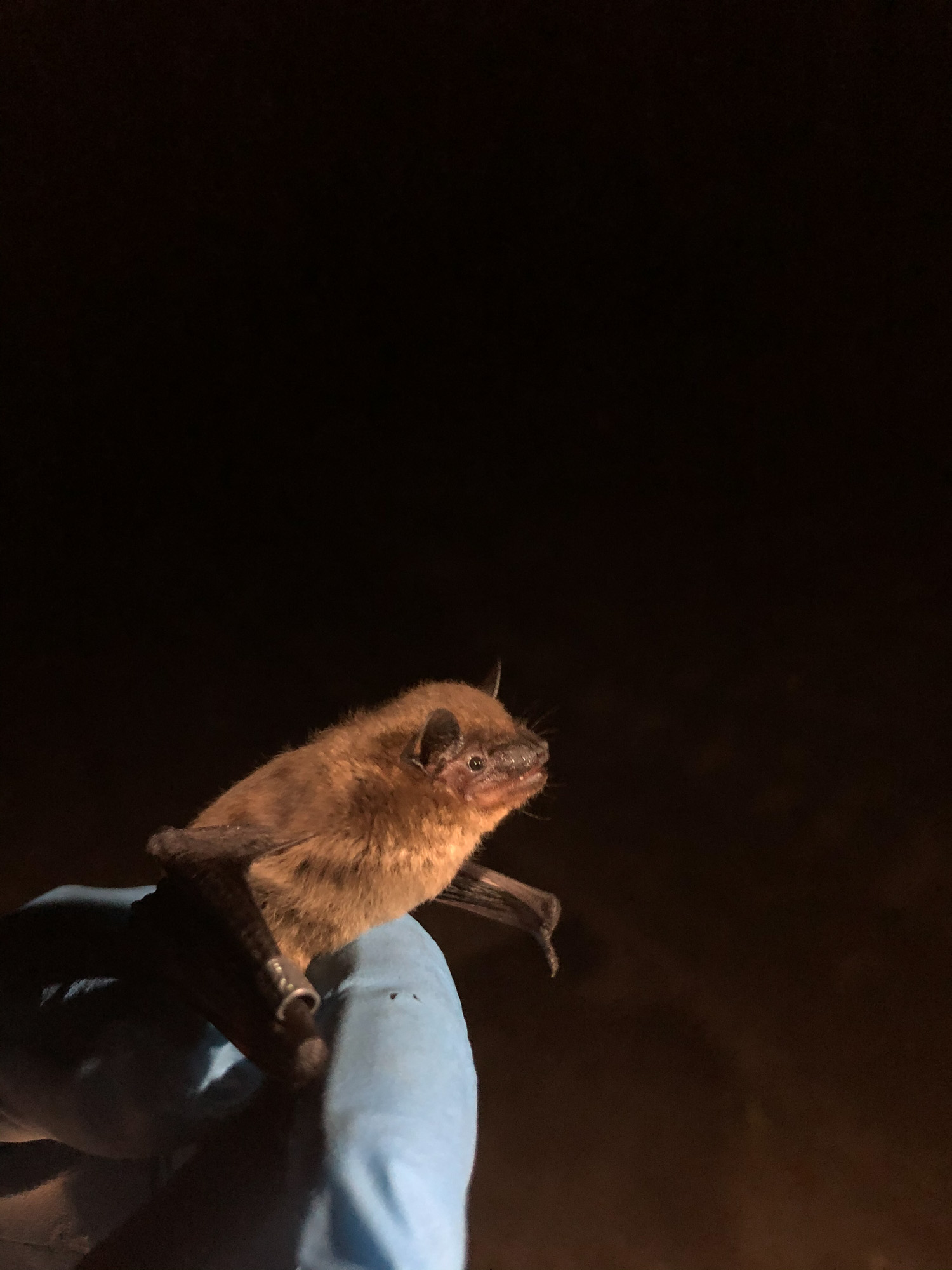
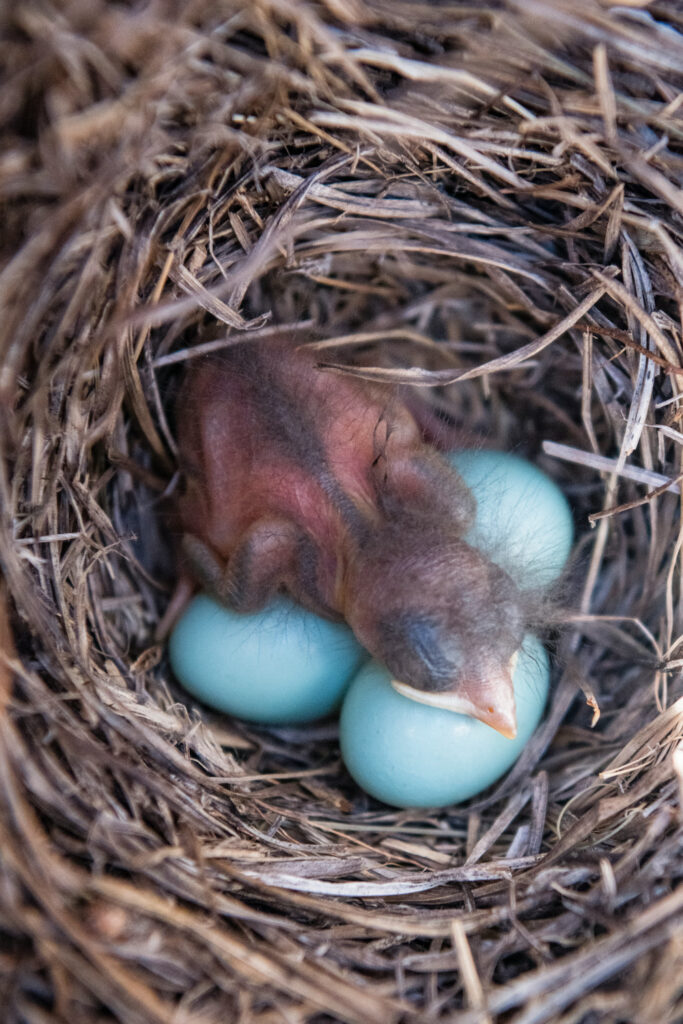
Nesting Success in Bluebird Nest Boxes
The Conservancy monitors 70+ bluebird nest boxes distributed throughout Palmetto Bluff. Our surveys run from mid-March through mid-August, during which we document all of the nest-building, egg-laying, and chick-hatching that we see. Nesting data are submitted to NestWatch at the end of each breeding season. NestWatch is a citizen science program overseen by the Cornell Lab of Ornithology.
In 2021, we took our monitoring program to the next level, transforming it into a research initiative. Each year, we measure temperature within a subset of nest boxes, an approach that allows us to understand how temperature fluctuations impact nest attempts and nesting success. Additionally, we conduct monthly noise surveys at each nest box, inspired by previous studies that have shown the detrimental effects of anthropogenic noise on bluebird nesting success.
Download a PDF to read more about what birds may be found using bluebird nest boxes.
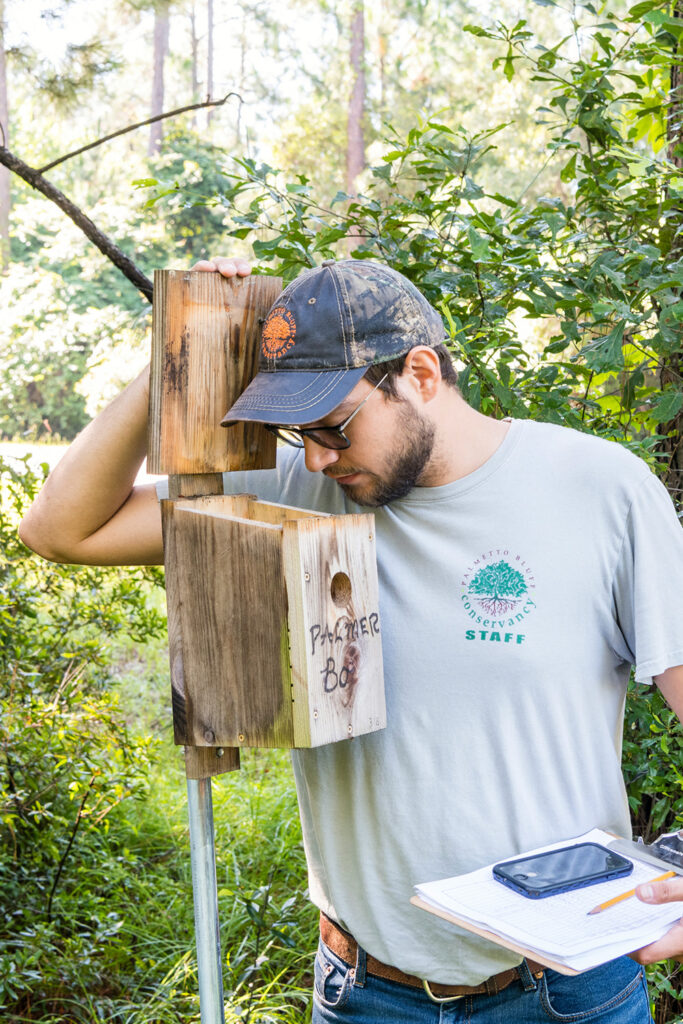
Citizen Science Projects
You can help us participate in several citizen science projects at local, national, and international scales. Join us as we check bluebird nest boxes for NestWatch, record birds at bird feeders for FeederWatch, and document chuck-will-widows during nightjar surveys. You can also help us count the birds we see while hiking our trails during the Great Backyard Bird Count and Global Big Day. Want to help us keep track of our scaly and slithery friends? Join us during our semi-annual herp blitz with the South Carolina Partners in Reptile and Amphibian Conservation (SCPARC)! Please email us at info@pbconservancy.org to learn more.
Slider Sections (duplicate and add css id to mega slider item)

Small Mammal Communities
Rodents, comprising 40% of all mammals, include over 2,500 species worldwide. They play crucial roles in ecosystems by dispersing seeds and spores, pollinating plants, and serving as prey for predators like owls, bobcats, and foxes. A healthy rodent population is essential for a balanced ecosystem. With support from the Friends of the Palmetto Bluff Conservancy, the Conservancy conducted a mark-recapture study to examine local rodent communities at Palmetto Bluff.
The study aimed to assess seasonal shifts in small mammal communities across three habitats: maritime forest, upland pine forest, and saltwater marsh. Each habitat was sampled once per season over two years, with vegetation characteristics measured to understand seasonal changes in vegetation structure within each habitat.
Small mammals were captured using Sherman live traps and processed before being released. The goal is to revisit these sites in a decade to observe potential changes in small mammal communities due to habitat alterations.
The maritime forest exhibited the highest species diversity, with captures including rice rats, hispid cotton rats, cotton mice, flying squirrels, and a single golden mouse. Despite this diversity, it had the lowest abundance of individuals. Conversely, the saltwater marsh had the highest number of captures, predominantly rice rats.
Download a PDF to read more about Common Native Rodents of Palmetto Bluff.
















Biodiversity of Sensitive Species & Landscape-Level Changes
To understand the health of our ecological community, the Palmetto Bluff Conservancy needs to first focus on how species sensitive to environmental pressures are faring in the face of change. Through funding from the Friends of the Palmetto Bluff Conservancy, we partnered with the Avian Research and Conservation Institute (ARCI) to develop a project evaluating the change in avian diversity and community composition over time due to landscape-level changes.
Photo credit: Gregg Lambton-Carr
This project was initiated in 2021, and our first two years focused on avian communities during two seasons: the spring breeding season and winter residency. ARCI documented species’ presence and relative abundance using avian point-count surveys, and we quantified landscape-level features that may influence avian diversity through ground vegetation surveys and GIS. Our goal is to repeat this project several years from now to note any changes in the avian community structure.
Although this first phase of the initiative is centered on birds as a group sensitive to environmental changes, we are expanding this project to other sensitive groups, including bats and insects. Insect sampling began in the spring of 2023 using Malaise traps, which are tent-like traps used to collect flying insects such as flies, wasps, beetles, and true bugs. Through a partnership with Kennesaw State University, acoustic surveys for bats began in 2024 using ultrasonic bat detectors.
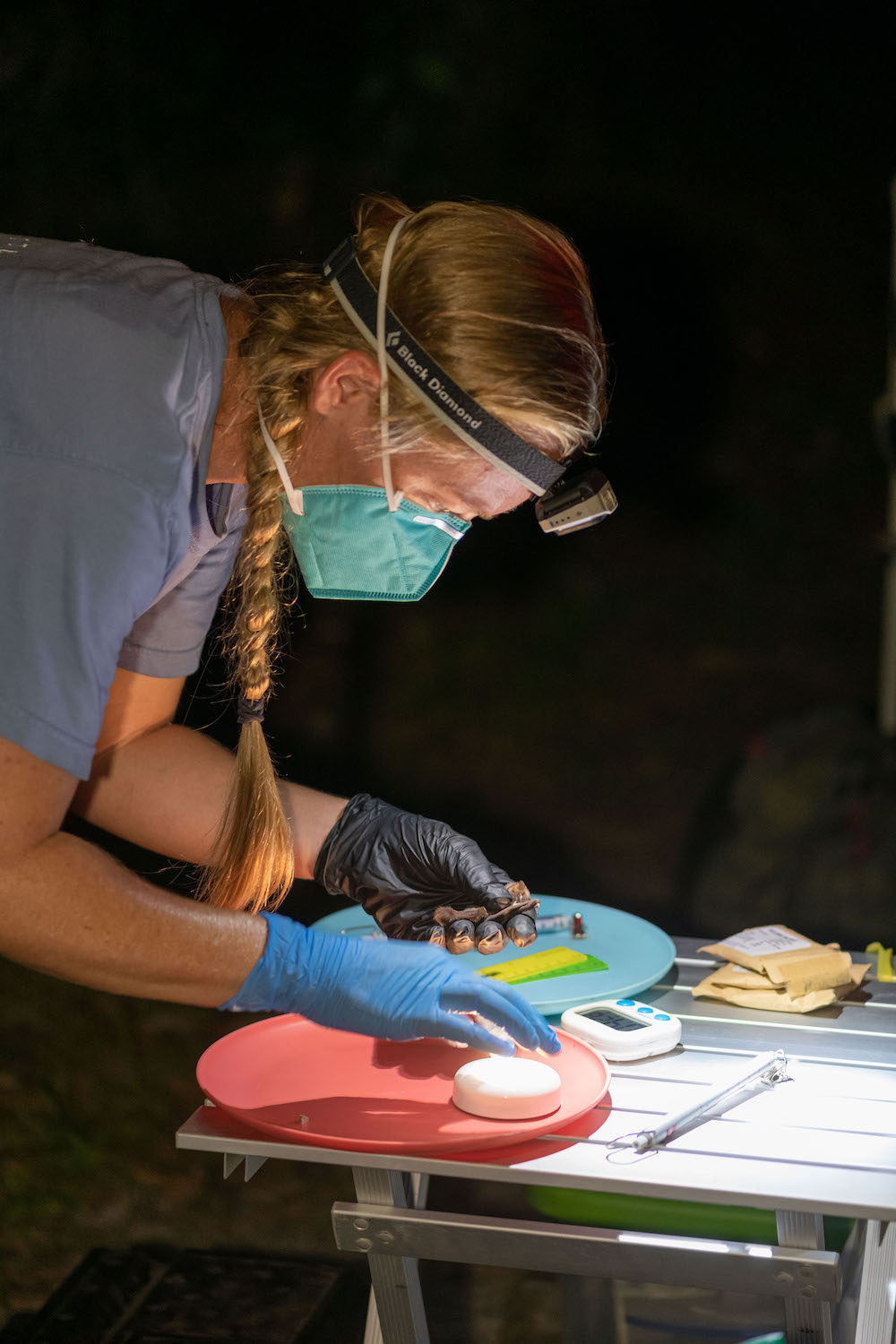












Monitoring Bat Populations
Palmetto Bluff was established as a long-term bat-monitoring site in 2015. The Palmetto Bluff Conservancy documents trends in bat populations by recording bats acoustically and by catching bats in mistnets. Captured bats are quickly processed and banded prior to their safe release. We survey bats year-round at Palmetto Bluff, but the bulk of our netting occurs from spring through fall. Nine species have been documented through mistnet surveys. Four species make up roughly 80% of our captures, including Seminole, big brown, evening, and tri-colored bats. The remaining 20% consists of eastern red, northern yellow, southeastern, Brazilian free-tailed, and northern long-eared bats.
In 2016, the first record of the federally threatened northern long-eared bat on the South Carolina coast occurred at Palmetto Bluff. Since then, other coastal populations have been discovered by SCDNR and private consultants. The 2022 Fish and Wildlife Service uplisting of northern long-eared bats from a threatened to endangered species – and the proposal of endangered listing for tri-colored bats – heightens the need for robust monitoring programs, like the one at Palmetto Bluff, along our coast.
Download a PDF to learn more about the Palmetto Bluff’s Conservancy’s bat research at the Bluff.
Photo credit: Gregg Lambton-Carr

Nesting Success in Bluebird Nest Boxes
The Conservancy monitors 70+ bluebird nest boxes distributed throughout Palmetto Bluff. Our surveys run from mid-March through mid-August, during which we document all of the nest-building, egg-laying, and chick-hatching that we see. Nesting data are submitted to NestWatch at the end of each breeding season. NestWatch is a citizen science program overseen by the Cornell Lab of Ornithology.
In 2021, we took our monitoring program to the next level, transforming it into a research initiative. Each year, we measure temperature within a subset of nest boxes, an approach that allows us to understand how temperature fluctuations impact nest attempts and nesting success. Additionally, we conduct monthly noise surveys at each nest box, inspired by previous studies that have shown the detrimental effects of anthropogenic noise on bluebird nesting success.
Download a PDF to read more about what birds may be found using bluebird nest boxes.

Citizen Science Projects
You can help us participate in several citizen science projects at local, national, and international scales. Join us as we check bluebird nest boxes for NestWatch, record birds at bird feeders for FeederWatch, and document chuck-will-widows during nightjar surveys. You can also help us count the birds we see while hiking our trails during the Great Backyard Bird Count and Global Big Day. Want to help us keep track of our scaly and slithery friends? Join us during our semi-annual herp blitz with the South Carolina Partners in Reptile and Amphibian Conservation (SCPARC)! Please email us at info@pbconservancy.org to learn more.
Helpful Bat Resources
Bat Research at the Bluff: Discover series: From Dusk to Dawn
Eastern Red Bats, Hoary Bats, and Silver-Haired Bats: Collisions at Wind Energy Facilities
White-Nose Syndrome: More Information
The Decline of Northern Long-Eared and Tri-Colored Bats: Research Article
Bat House Building: Bat House Builders Handbook
Bat-Human Interactions: SCDHEC on Rabies | CDC on Rabies | Bats in Buildings Guide
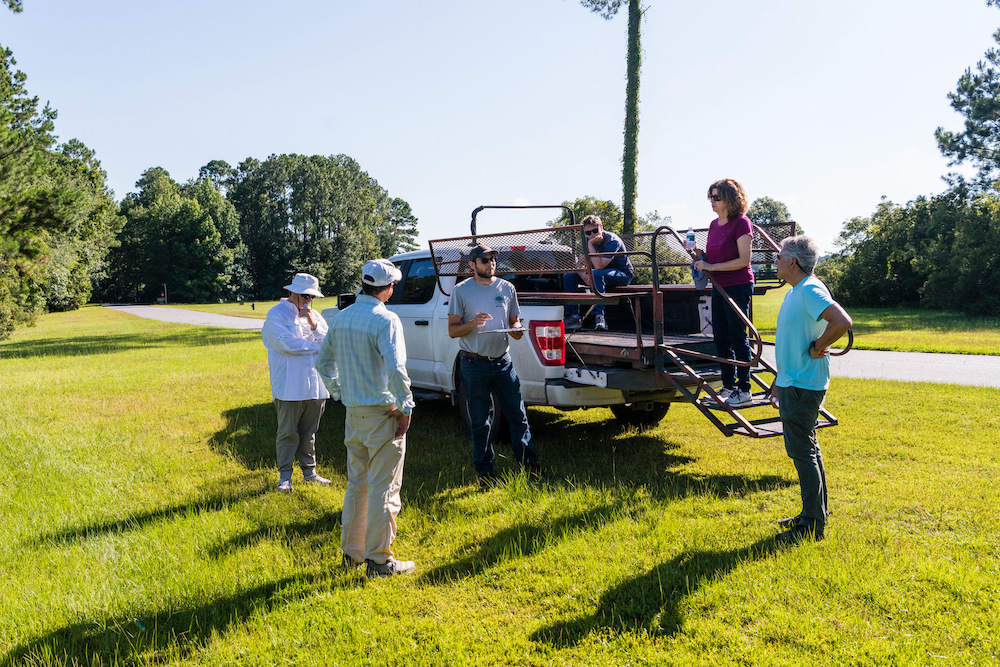
Thank You to Our Volunteers
Thank you to all the volunteers who assisted with the fieldwork for our various projects. It would not have been a success without your hard work!
Volunteers: Anne Palyok, Arthur Roberts, Cassie Beato, Gretchen Oley, Jeanne Carmichael, Jicayla Johnson, Jim Watson, Karen Seminary, Kristen Mattson, Leanna McMillan, Sarah Larkby, Talia Vaught, and Thomas O’Brien.
Interested in Conducting Research?
If you would like to conduct research in collaboration with the Palmetto Bluff Conservancy, contact Lydia Moore at lmoore@pbconservancy.org
We Appreciate Your Support.
The Palmetto Bluff Conservancy, a 501(c)(3) non-profit, focuses on outreach, education, research, land and wildlife management, and conservation of Palmetto Bluff’s natural and cultural resources. Our team includes land and wildlife managers, a biologist, a full-time educator, and seasonal interns.
Your donation helps us expand our environmental research, conserve resources, and keep our programs free and accessible. Contributions are tax-deductible as permitted by law.
Join Our Newsletter
Stay up to date with the Conservancy’s news and events.


